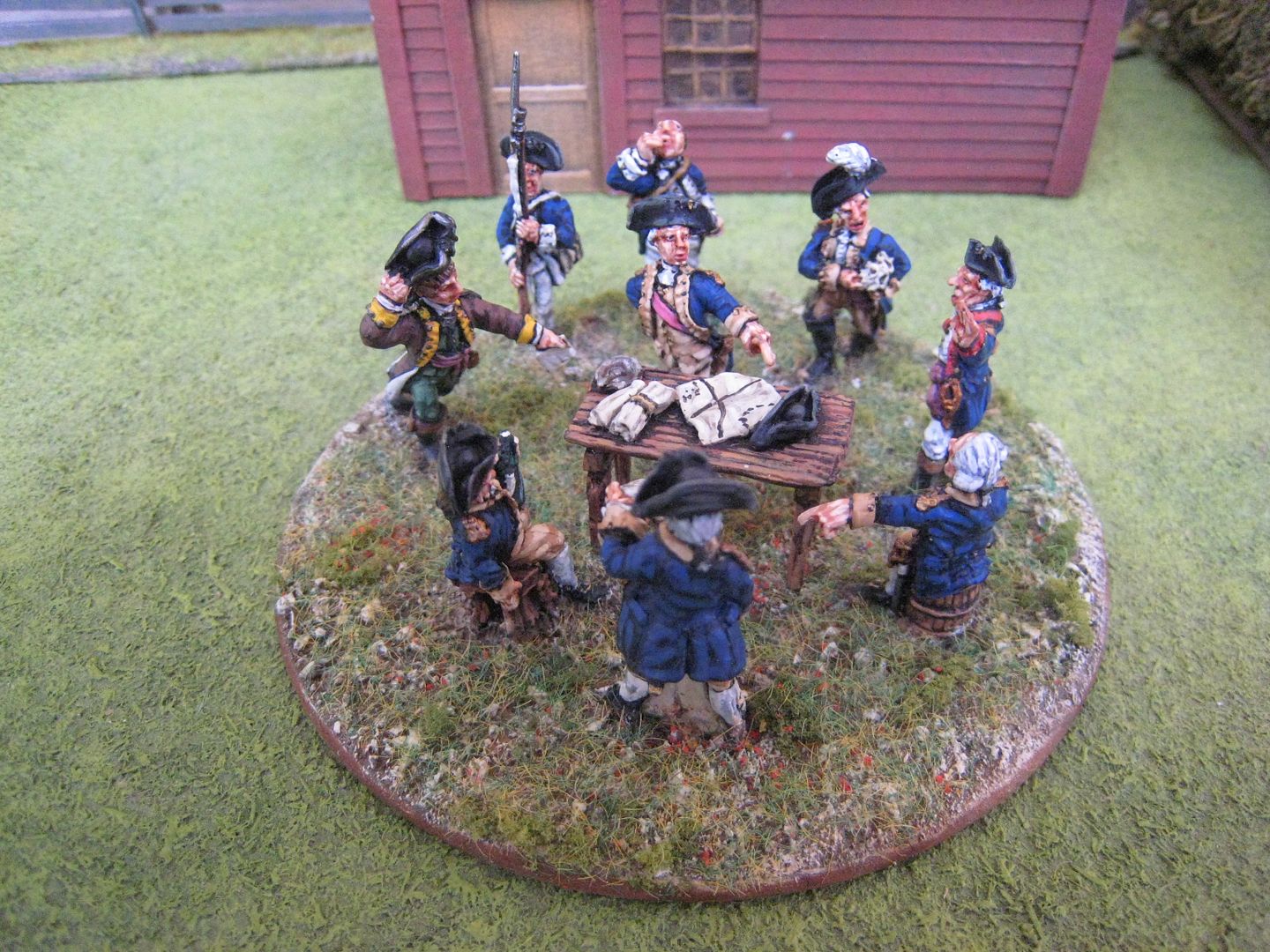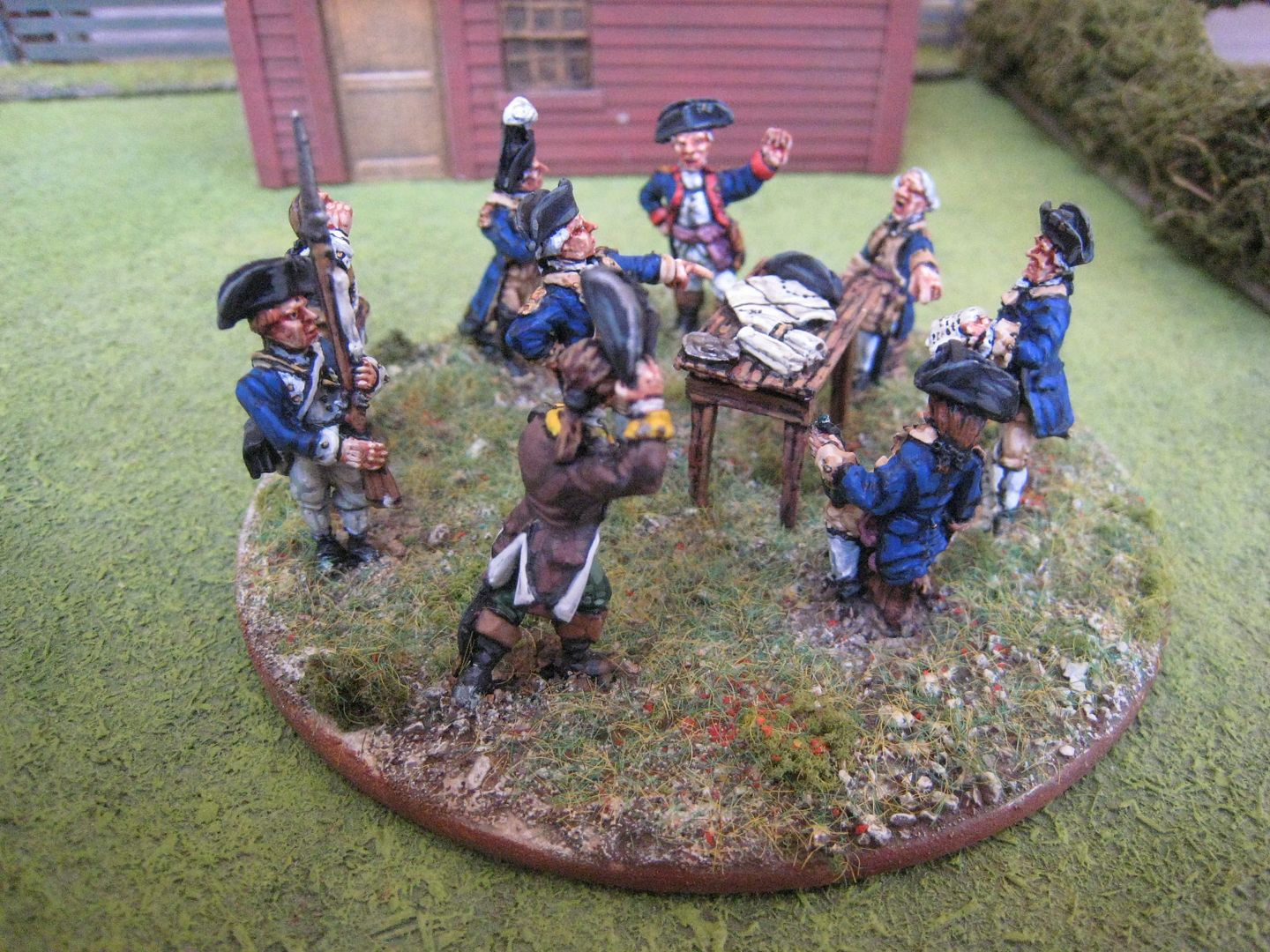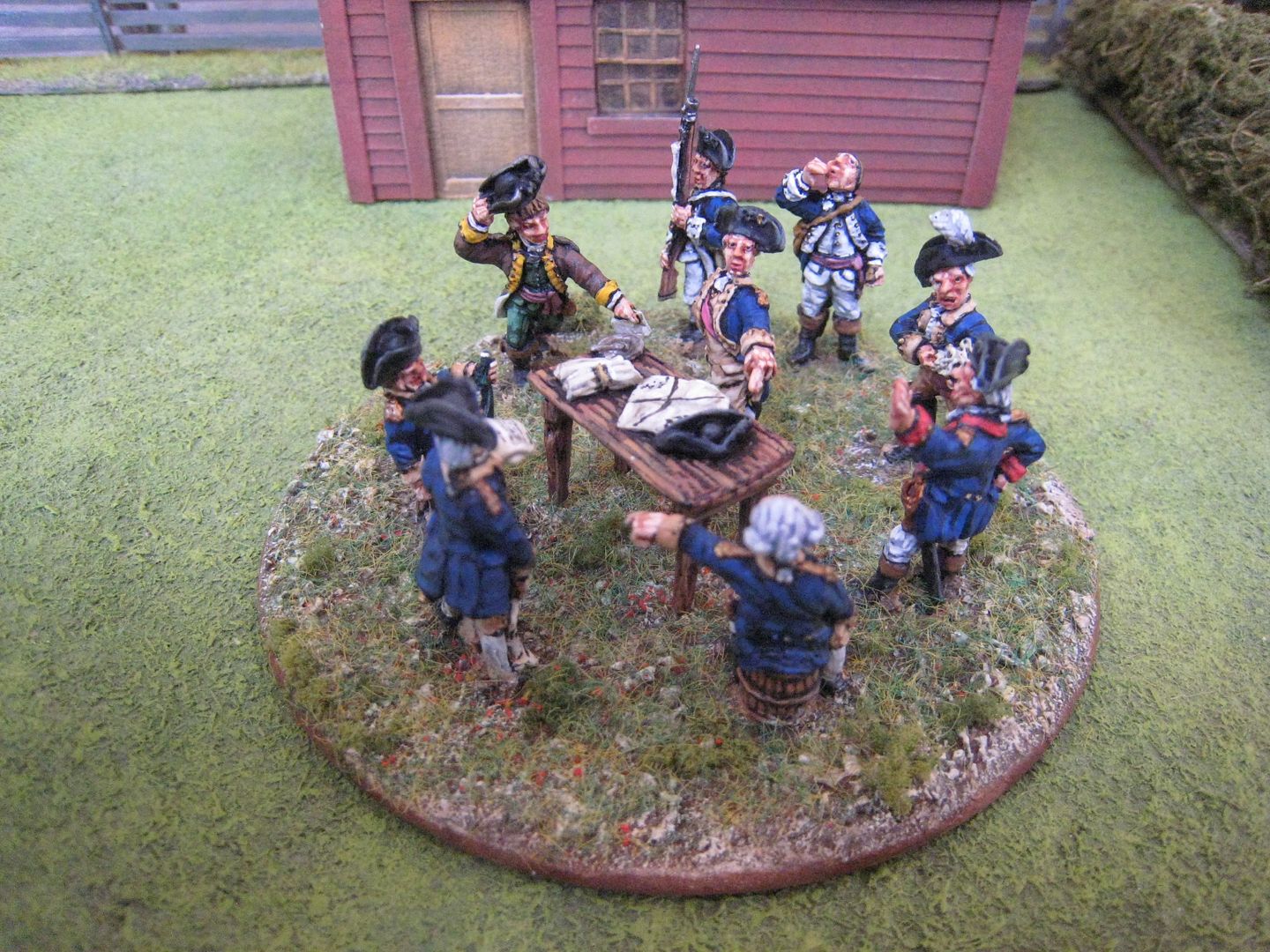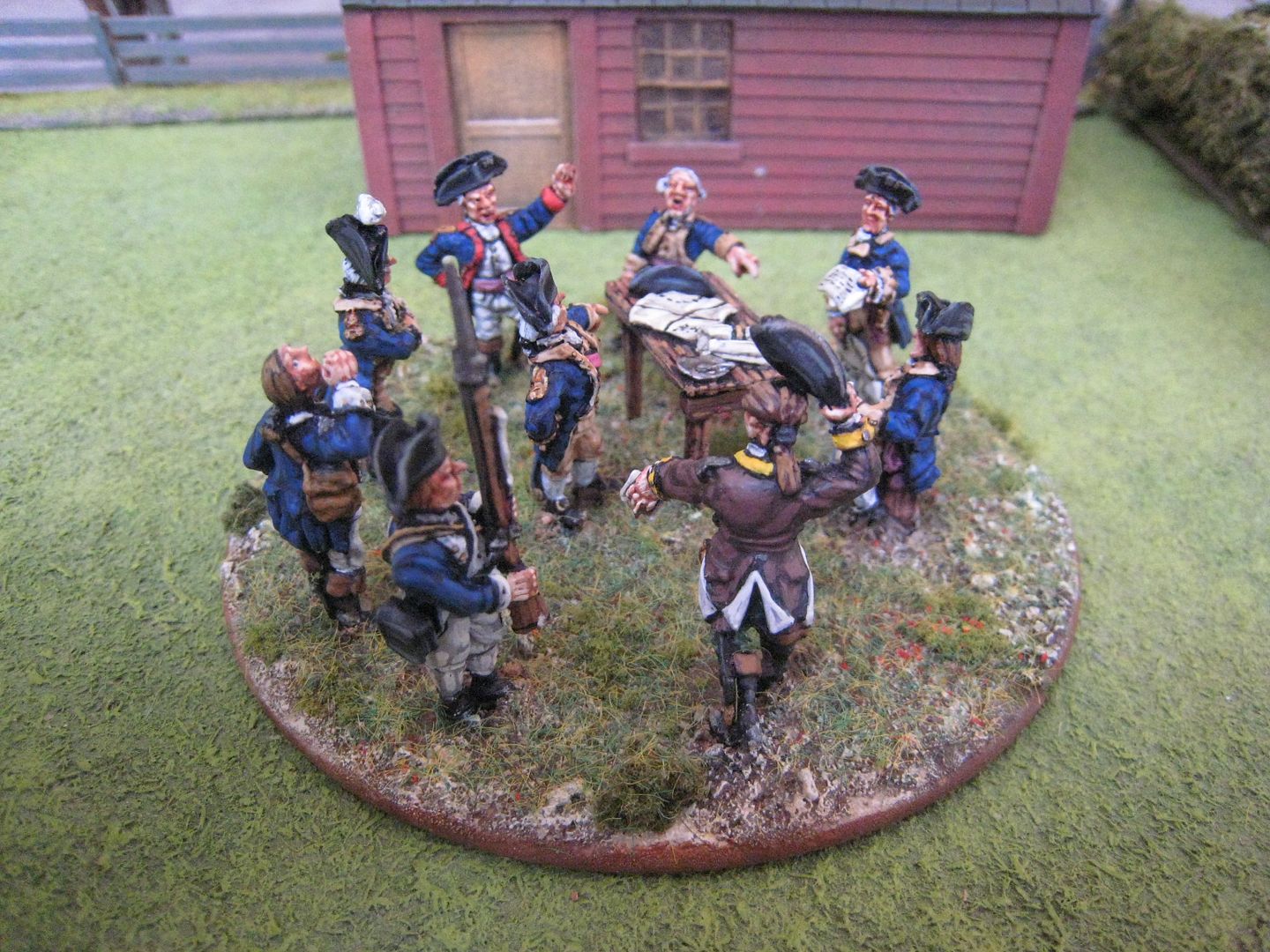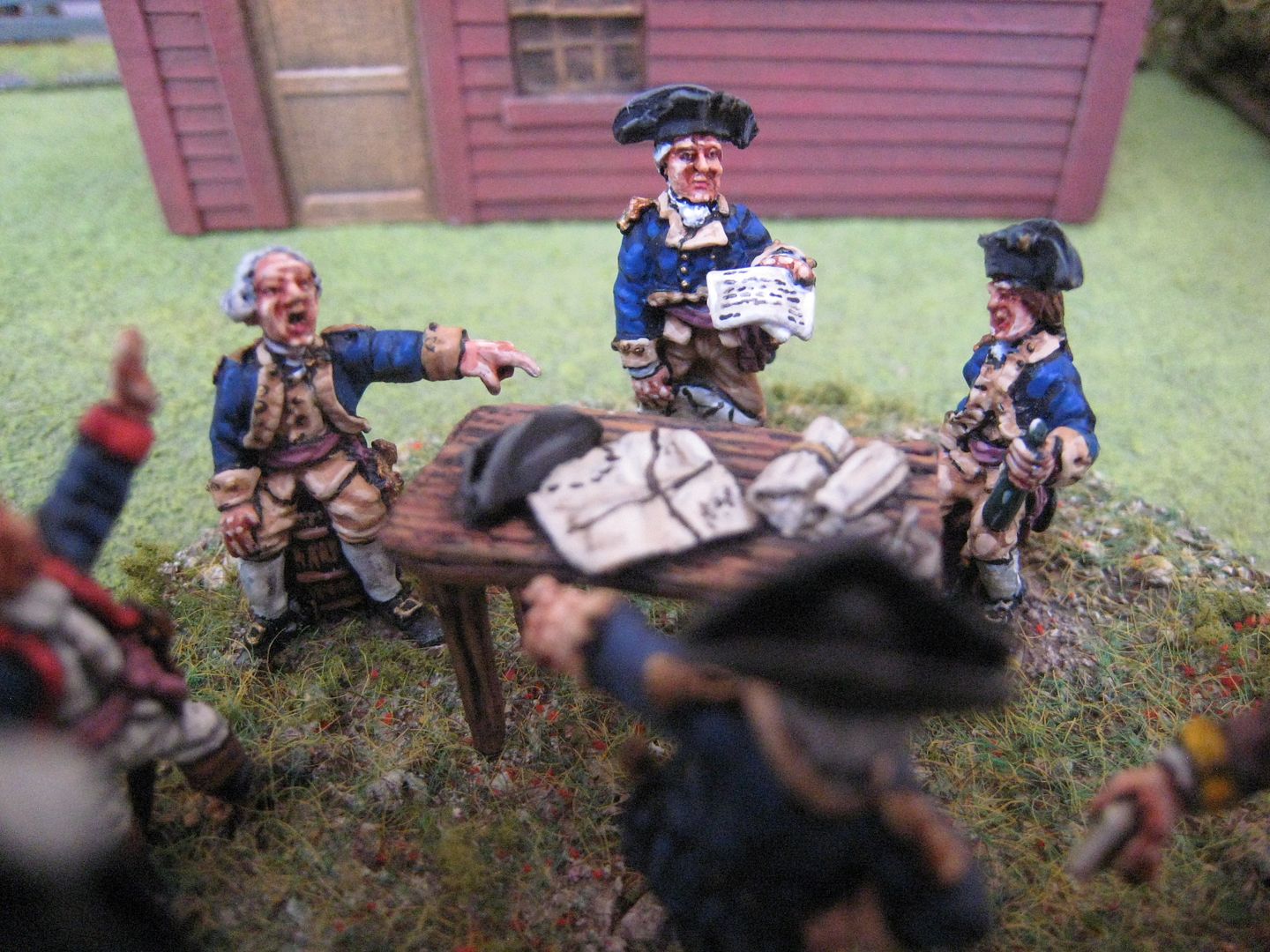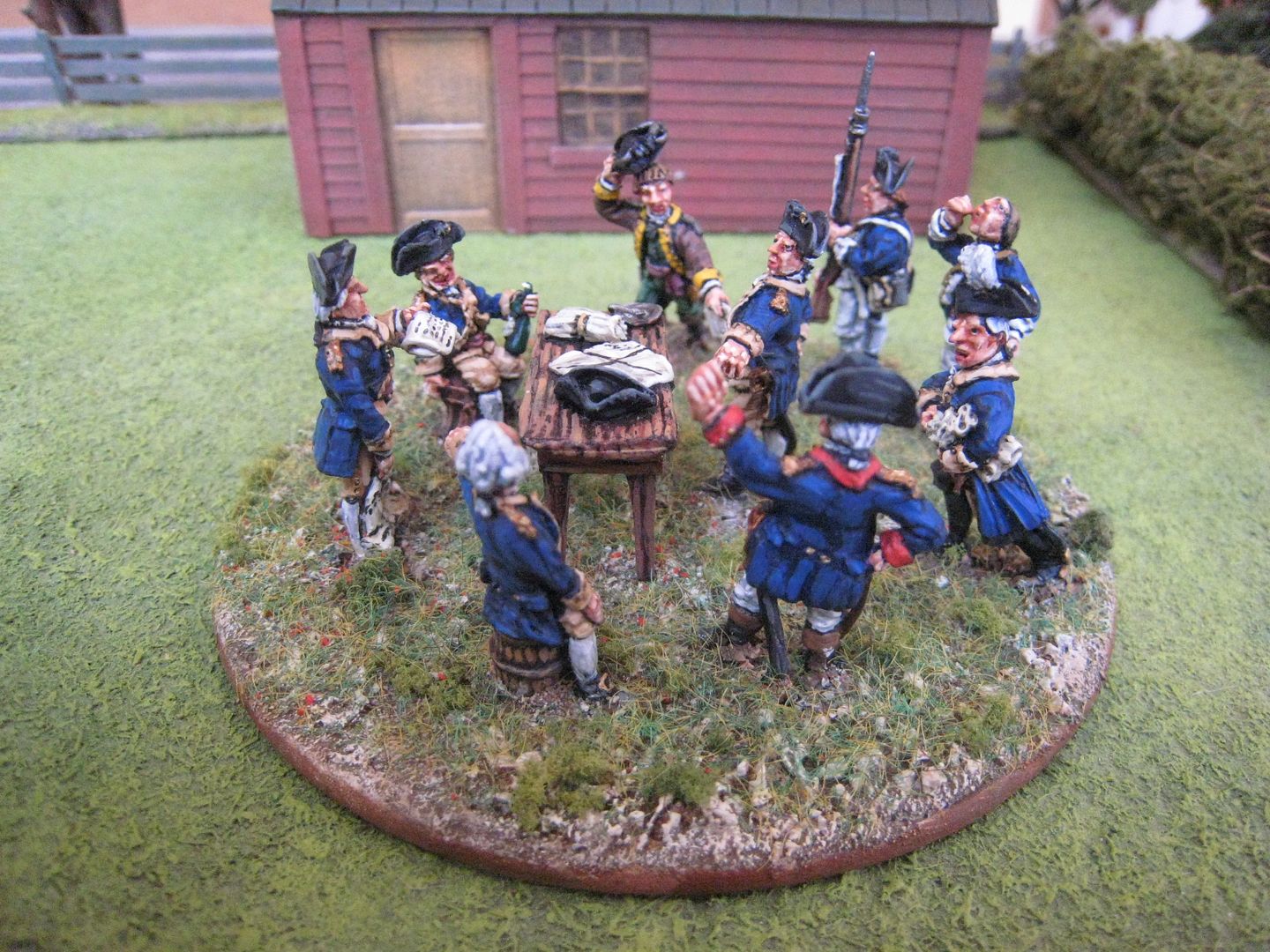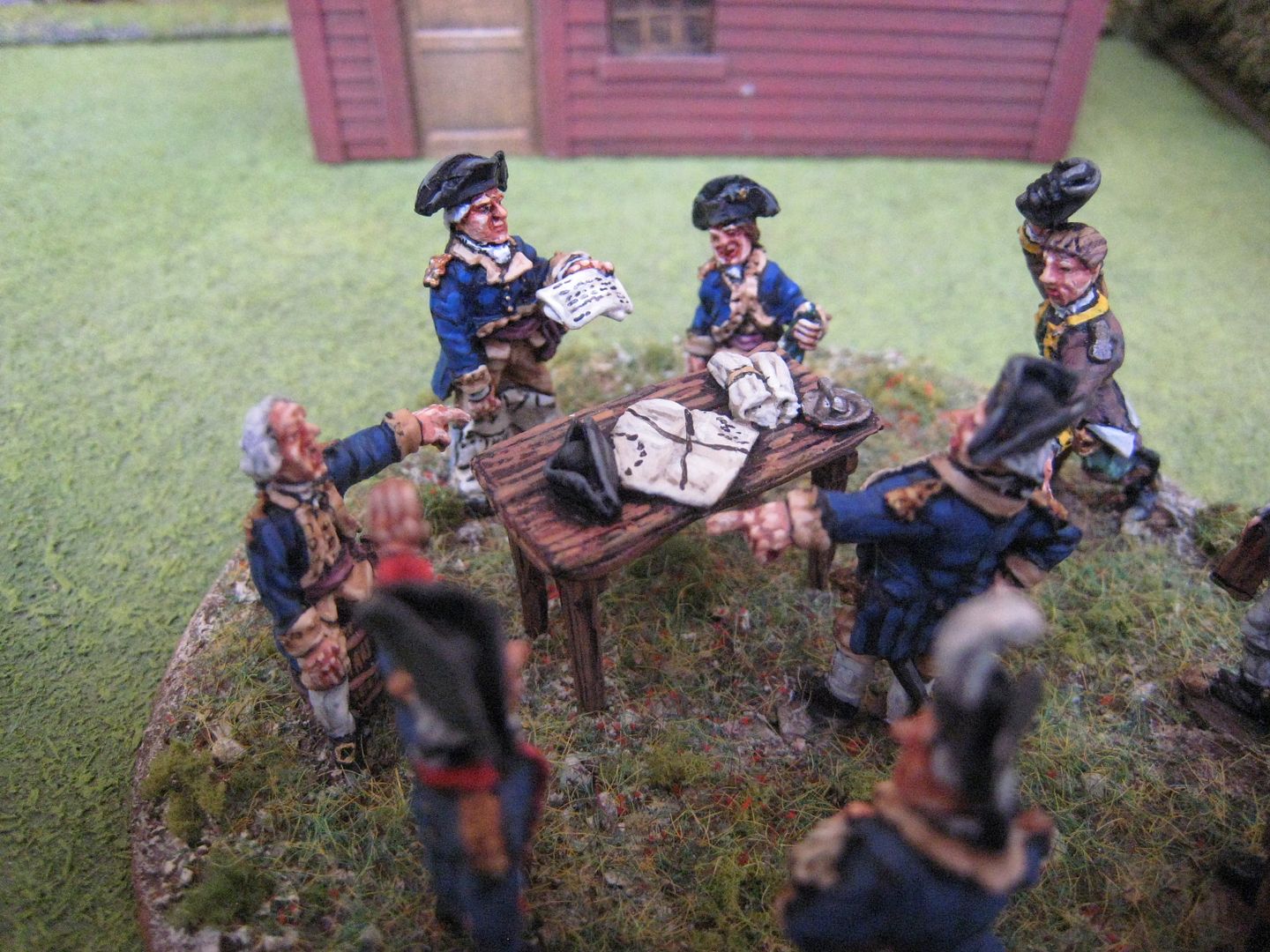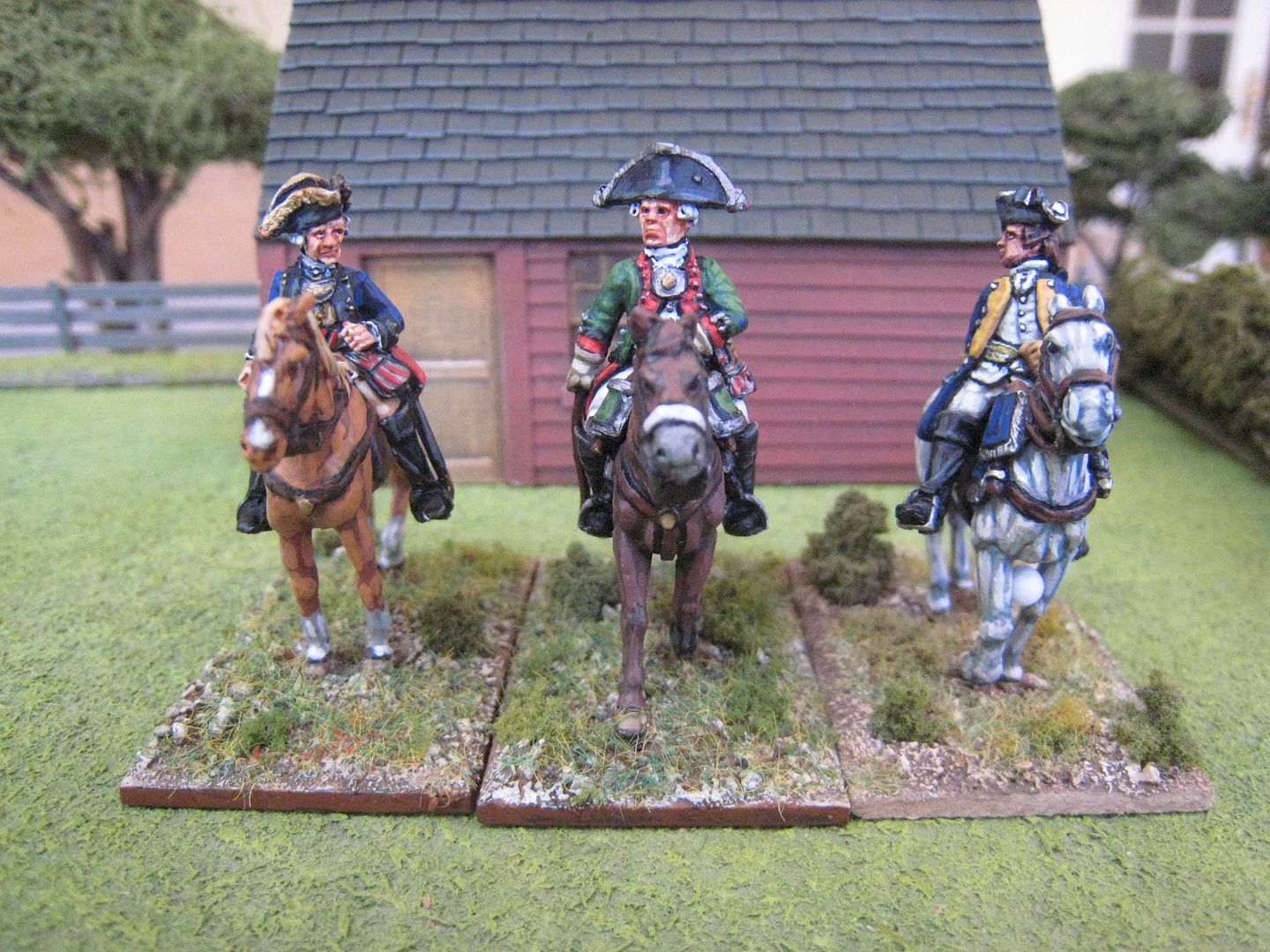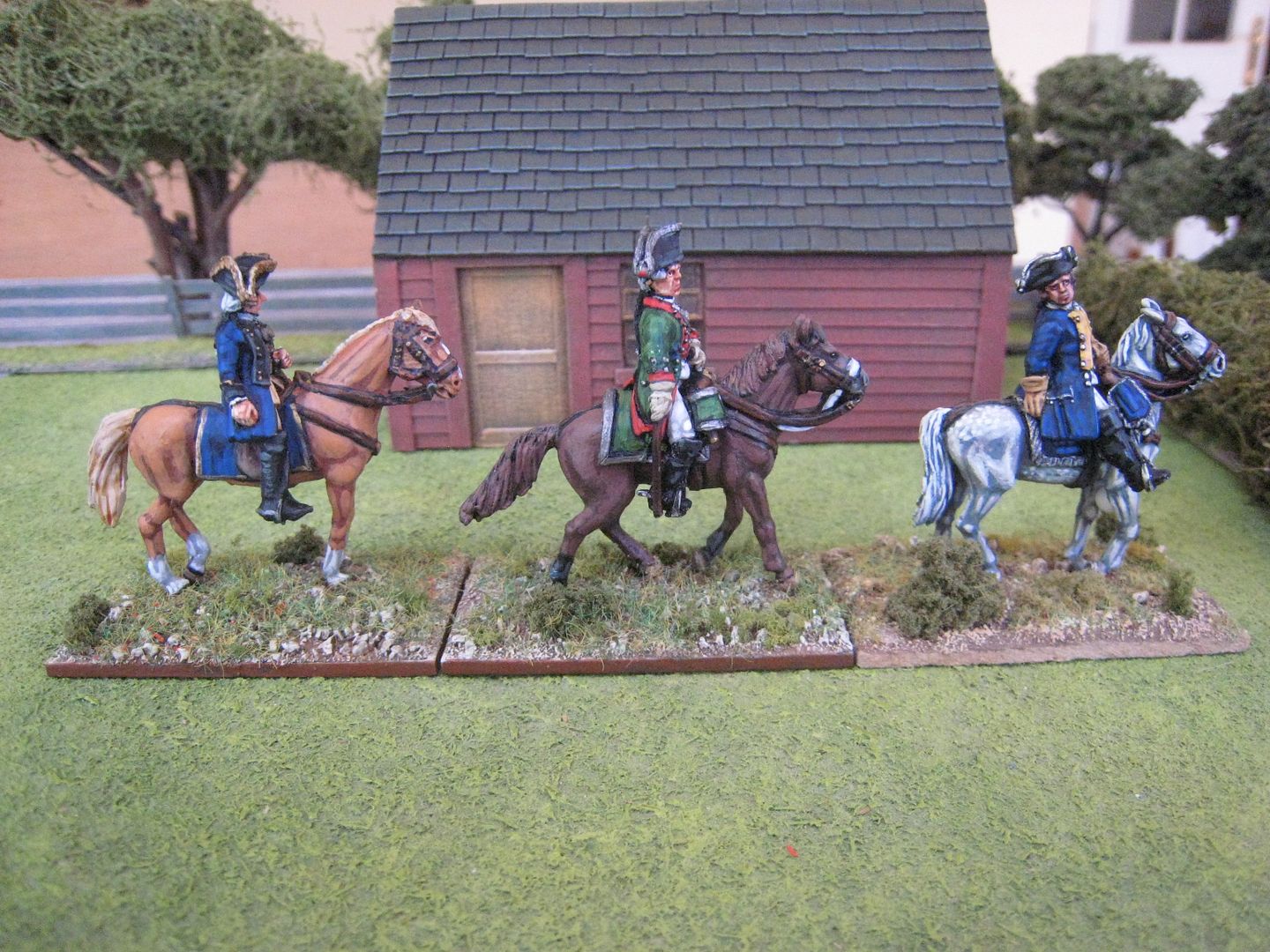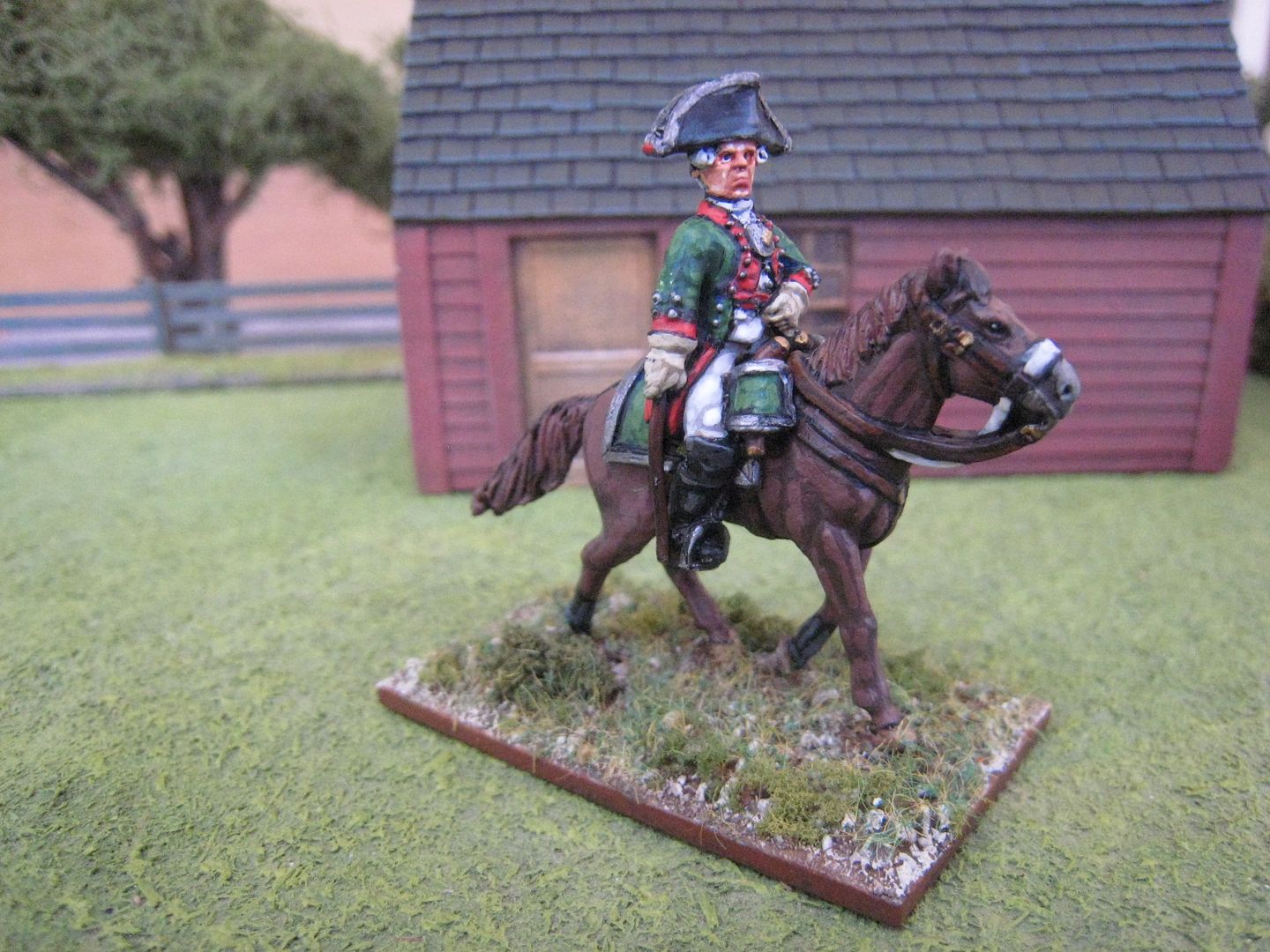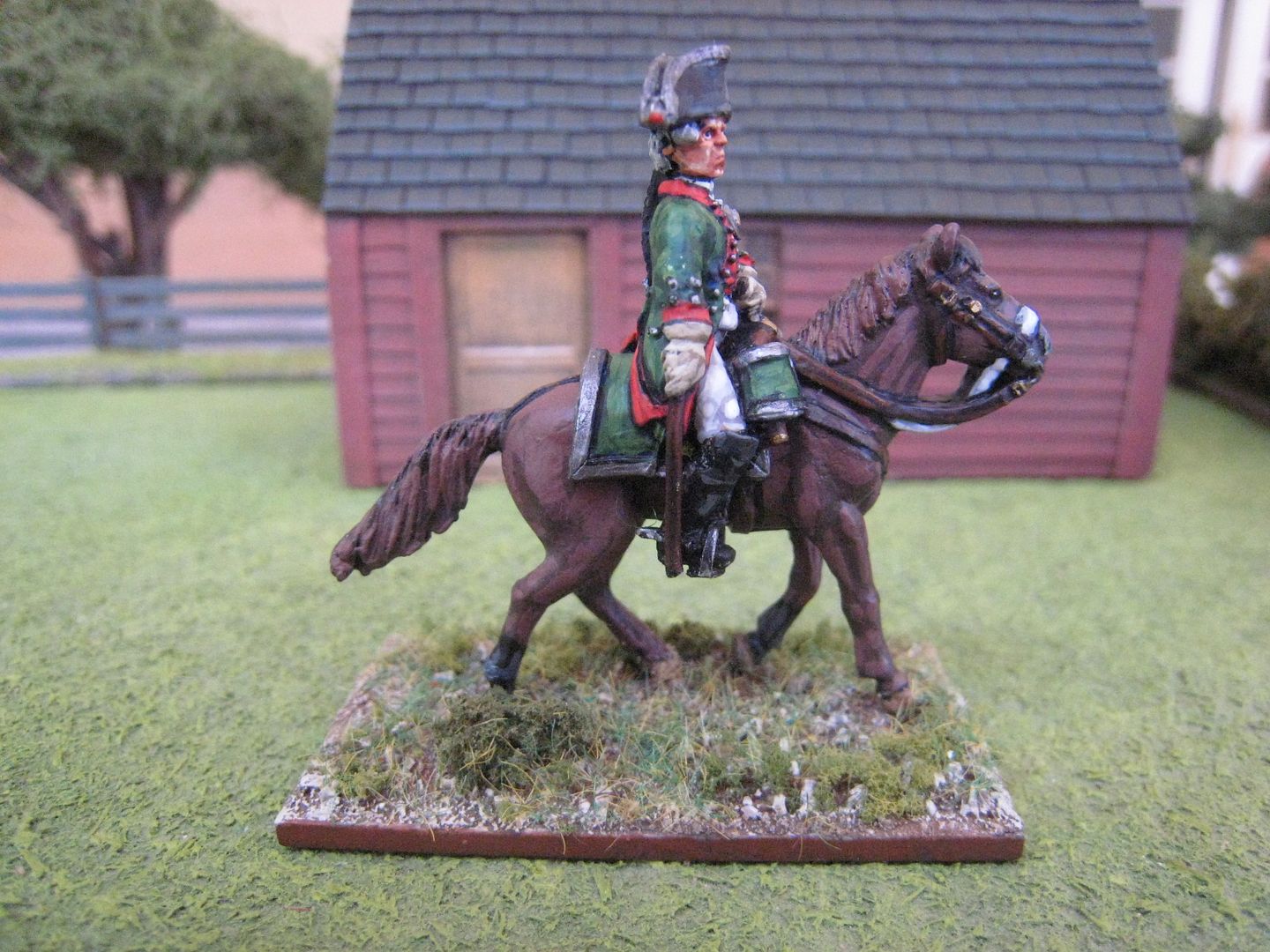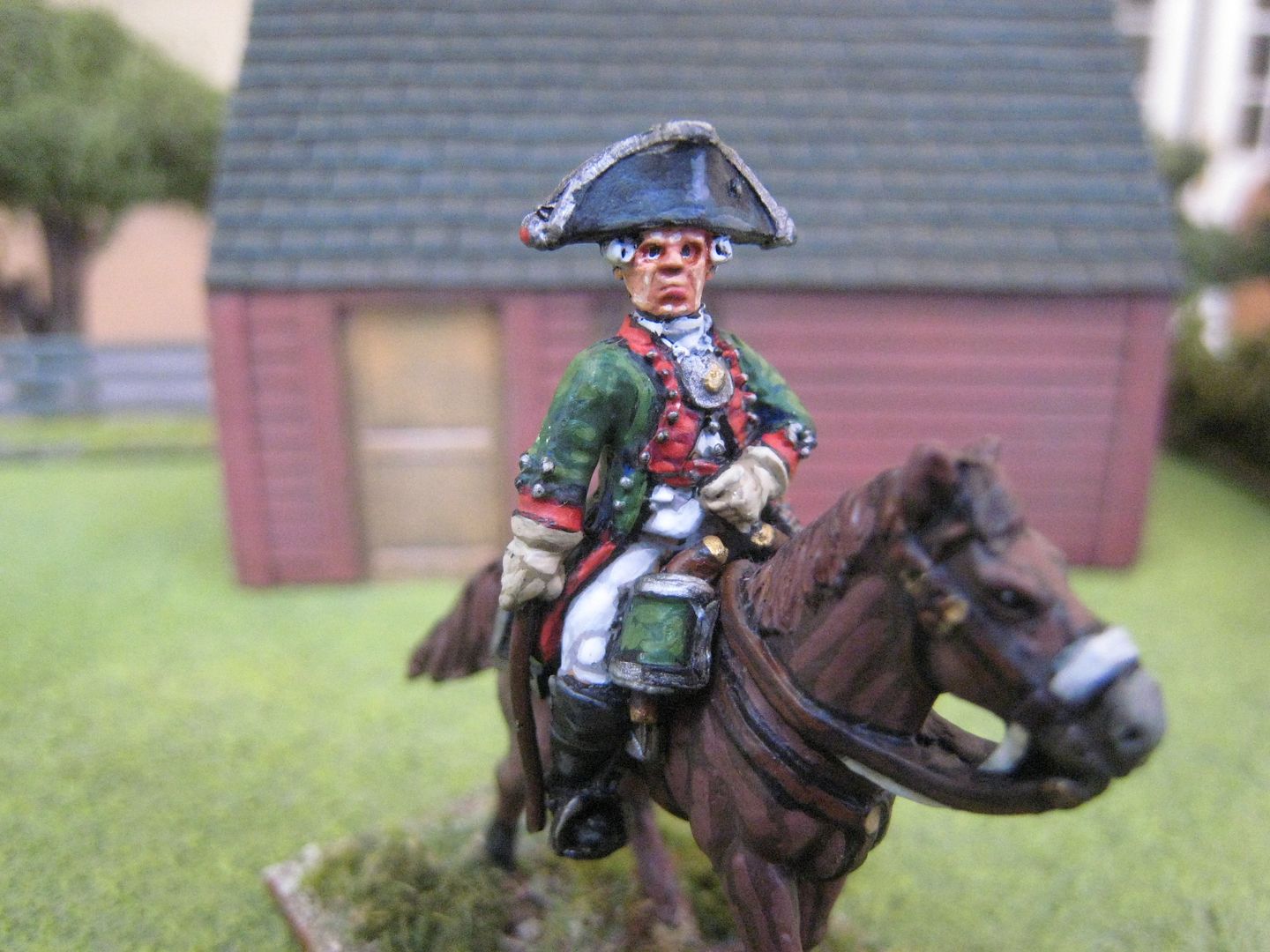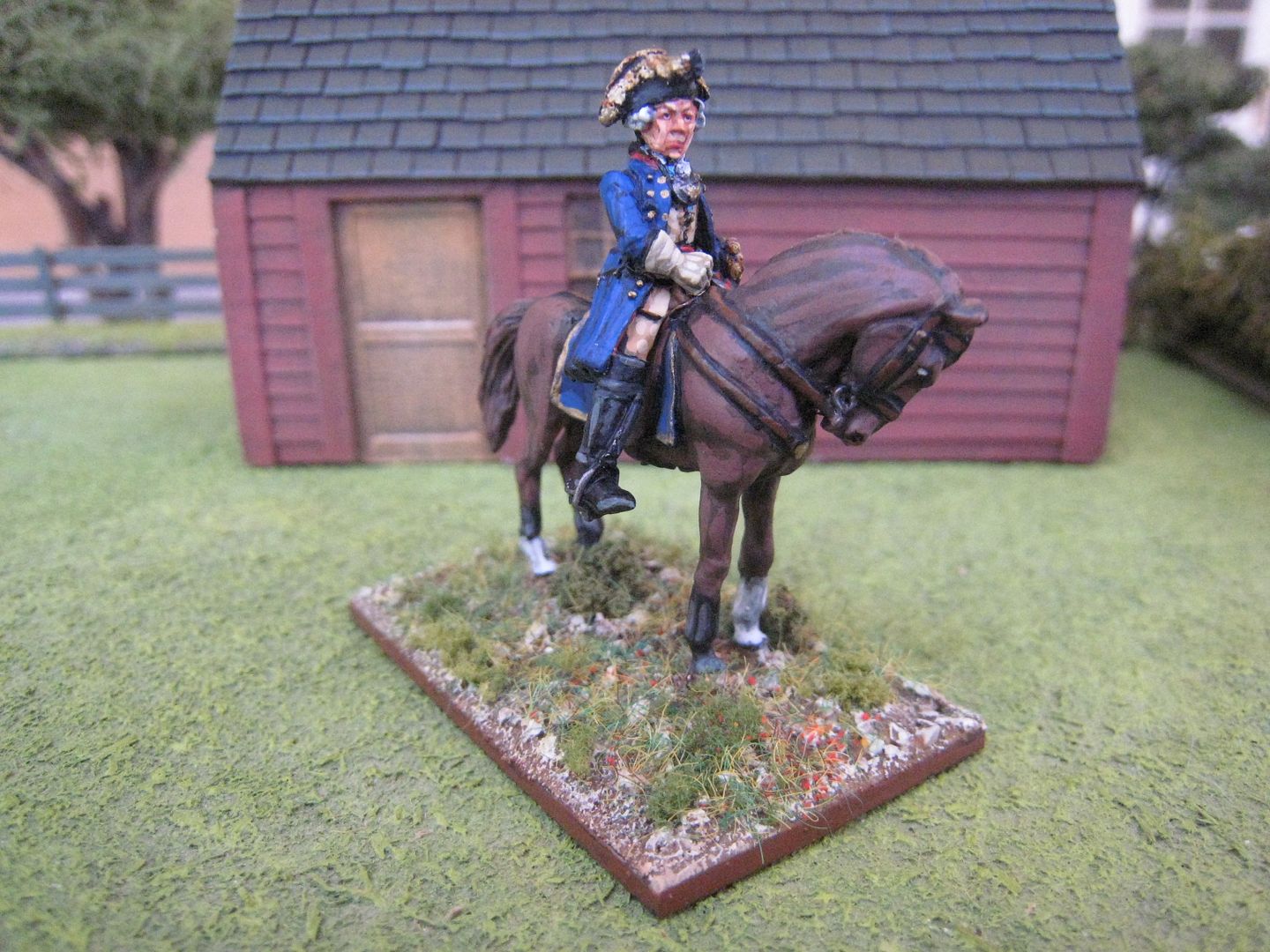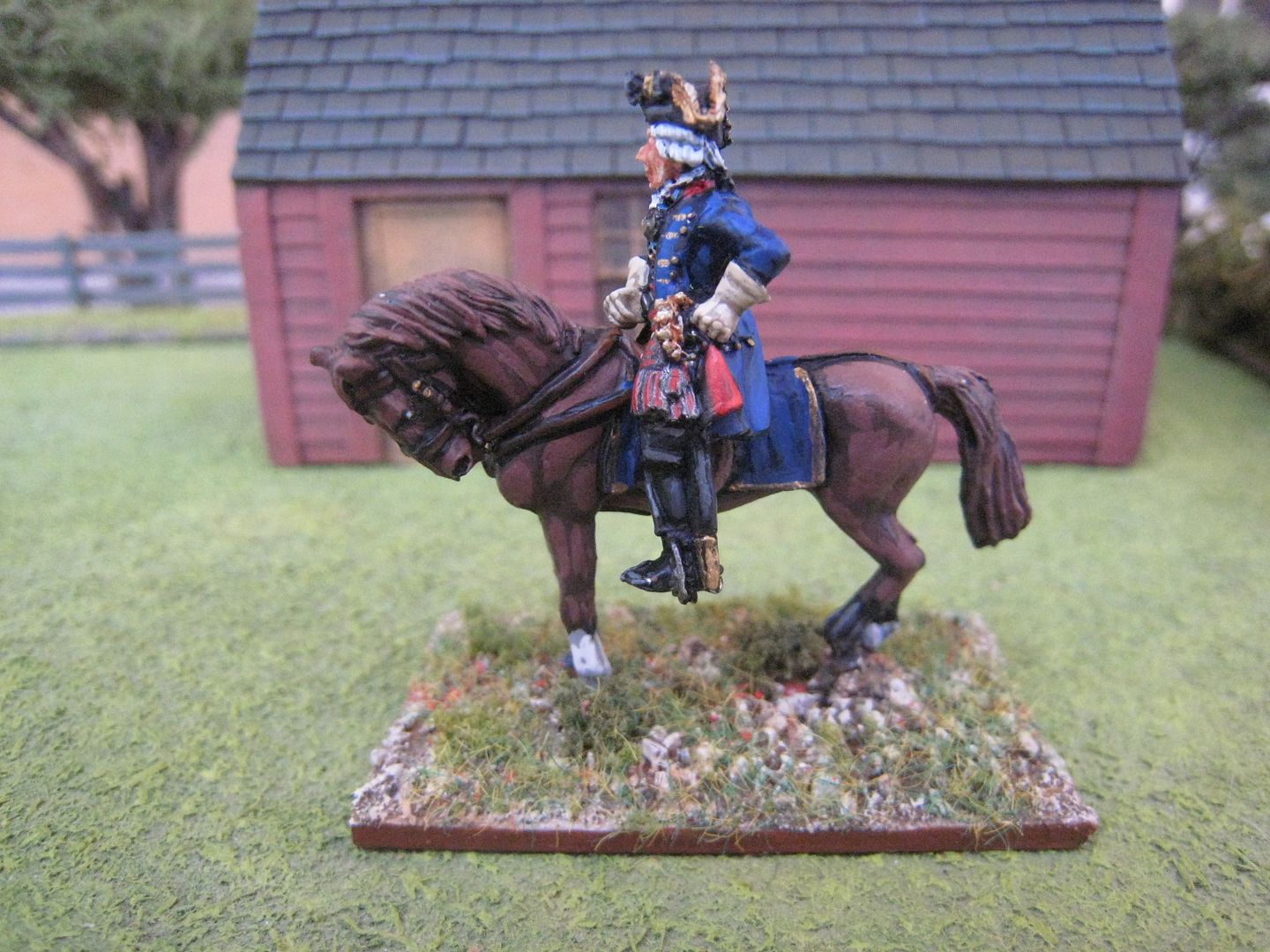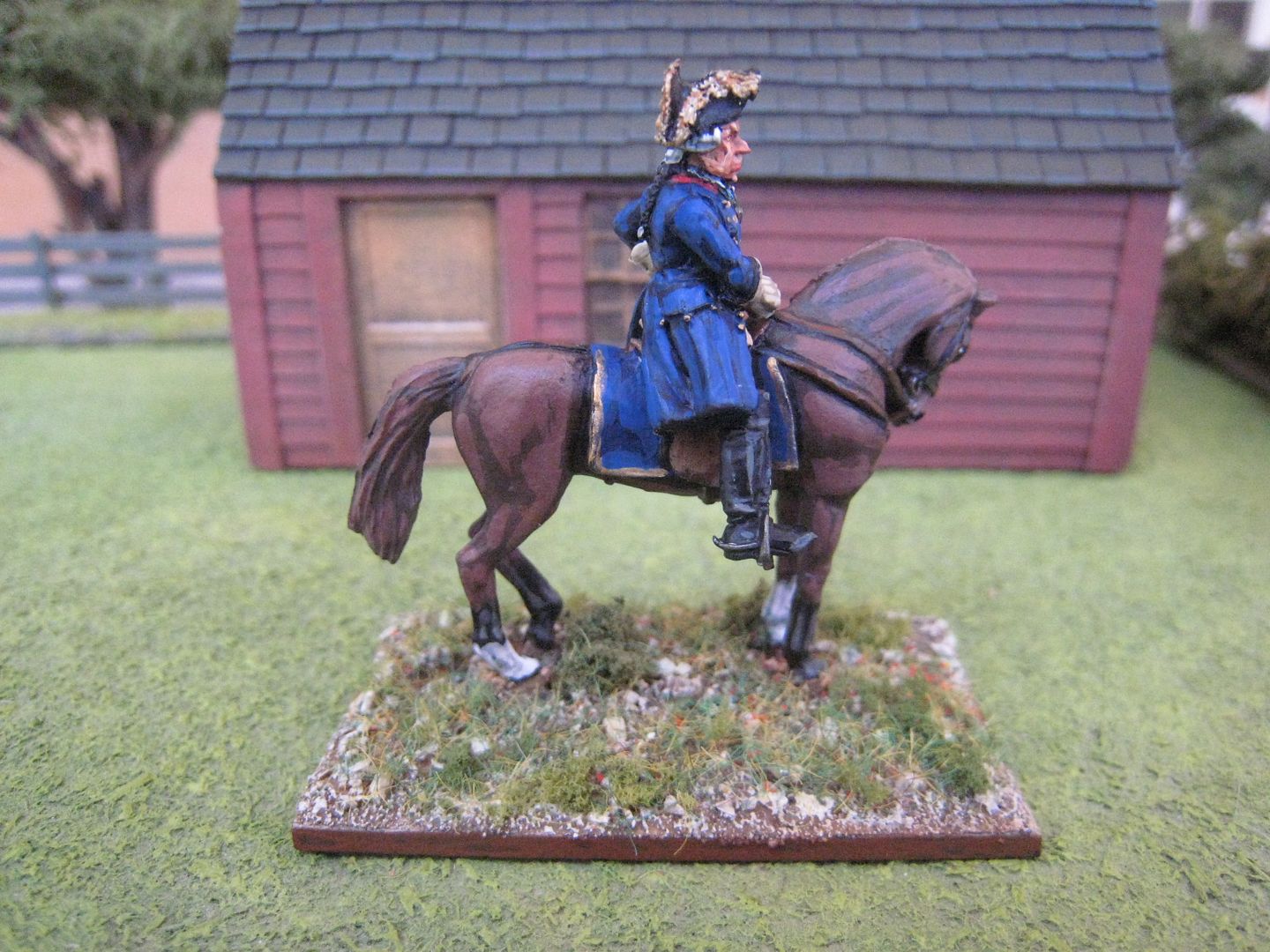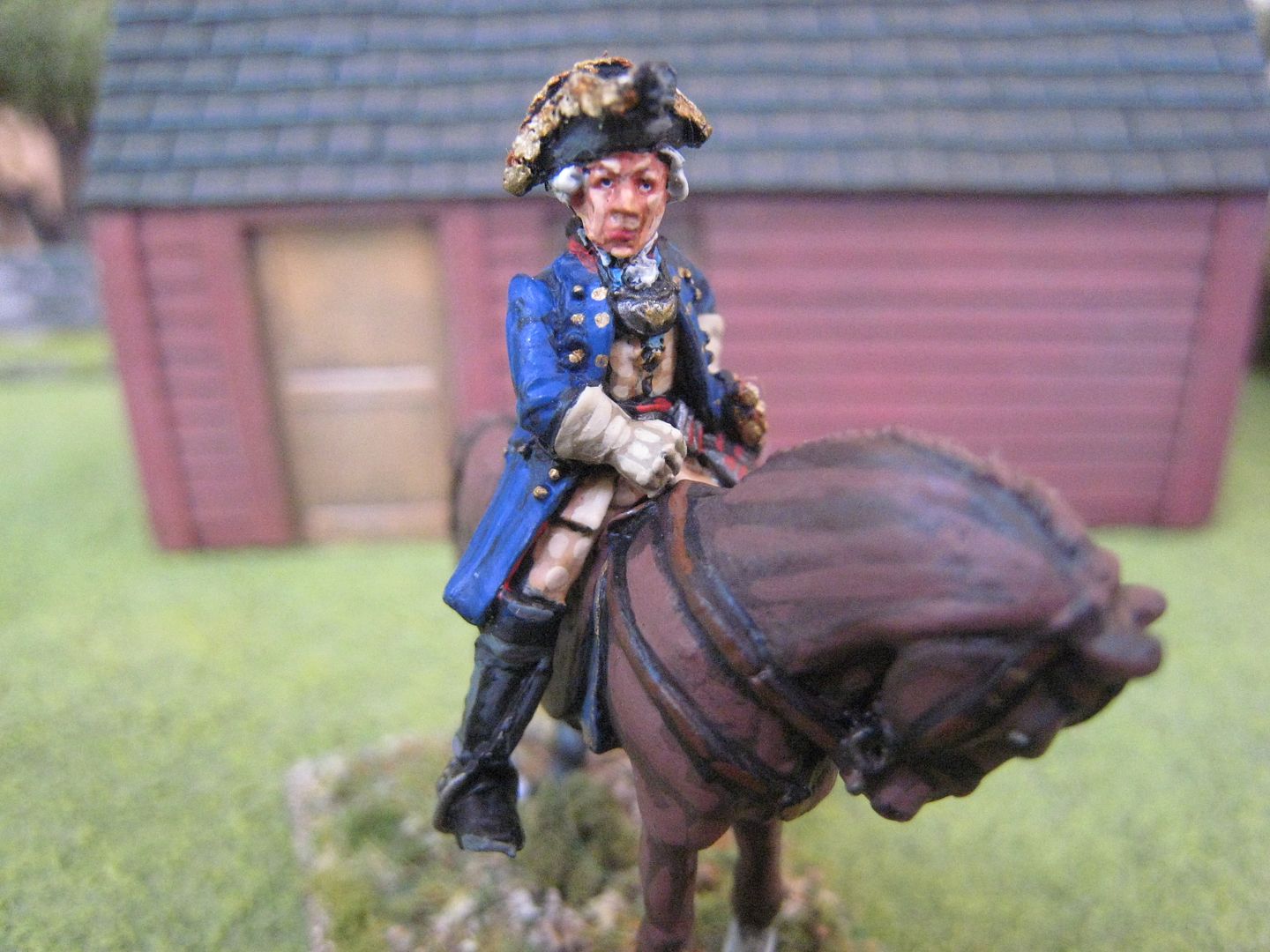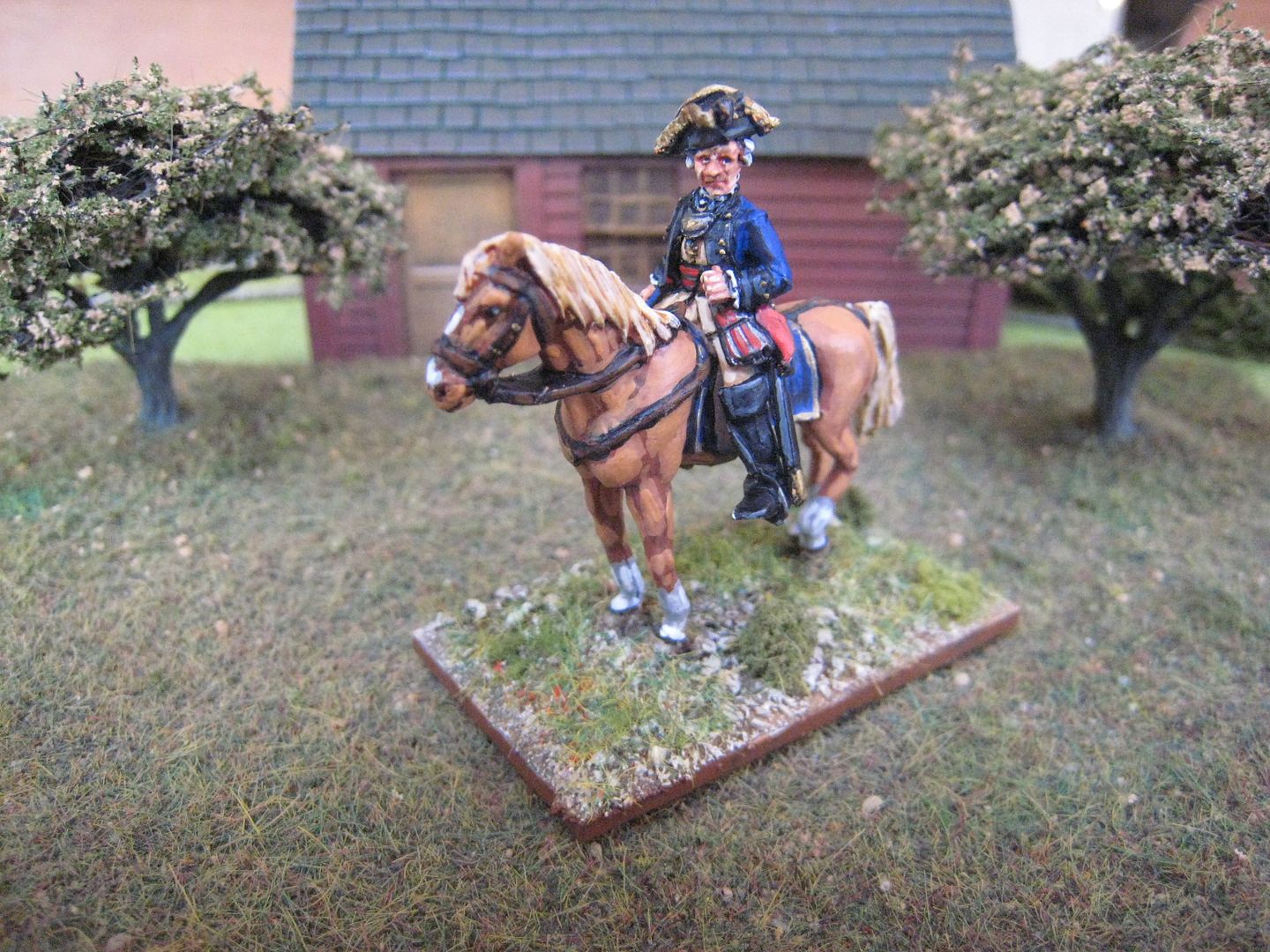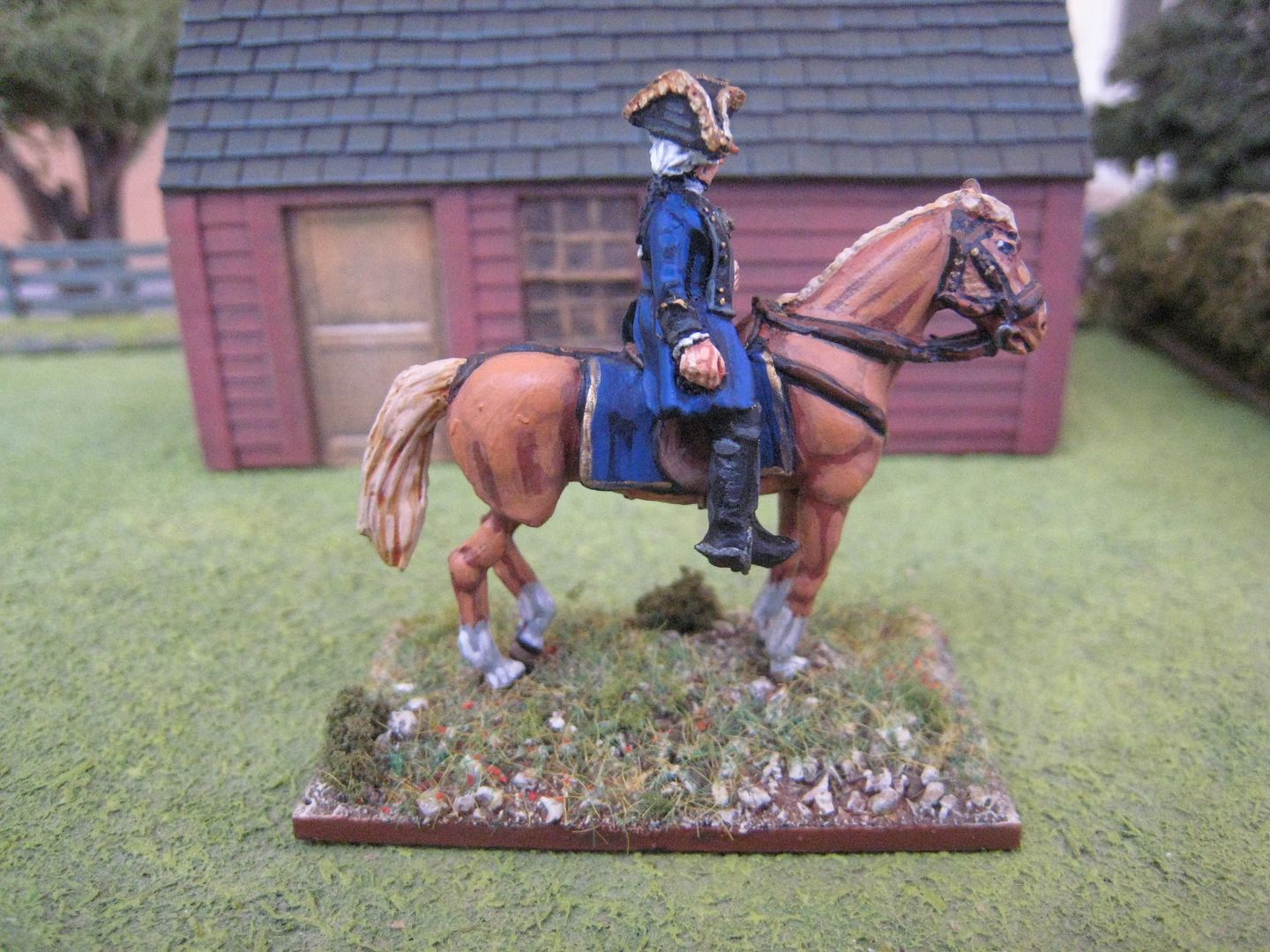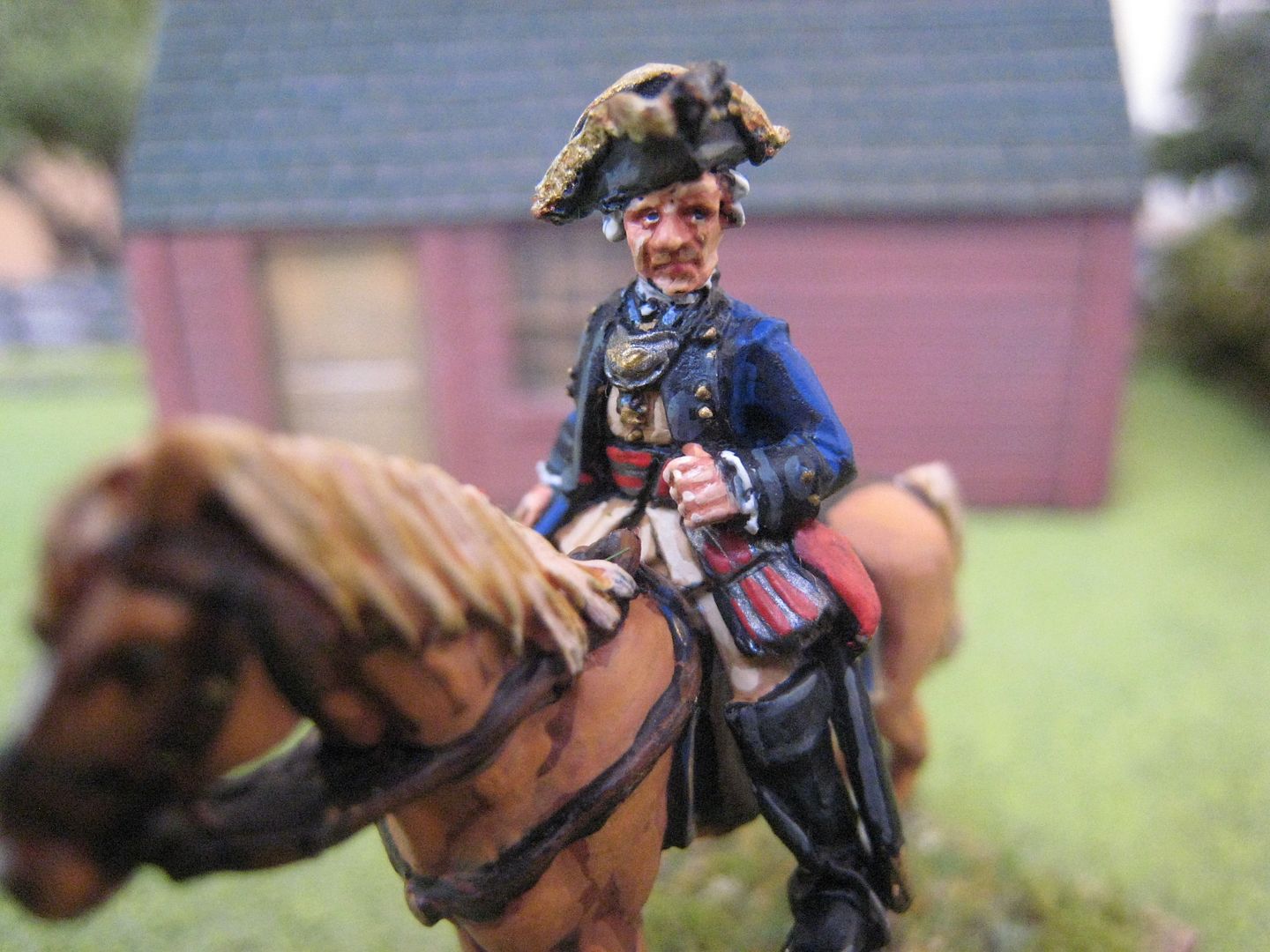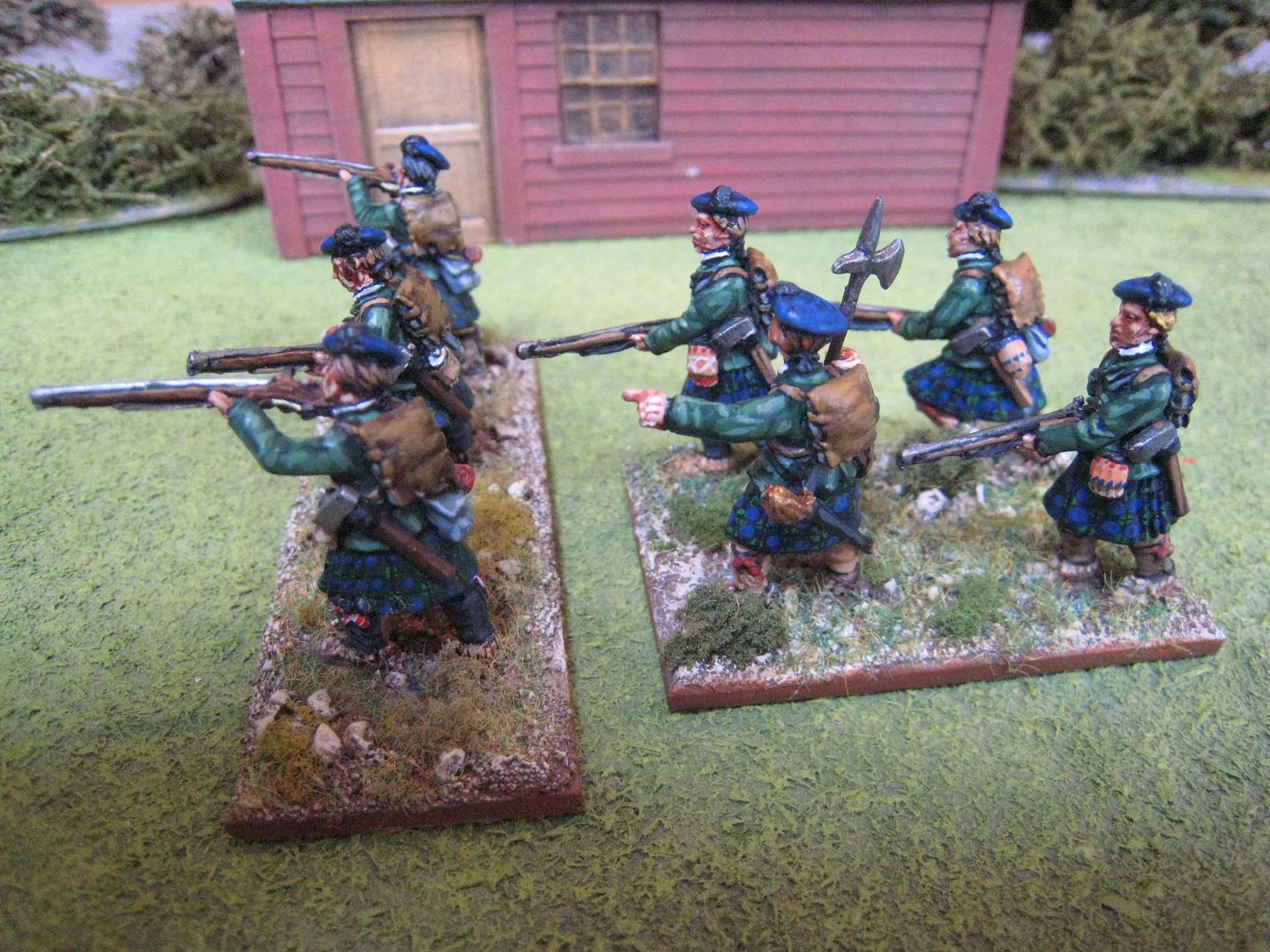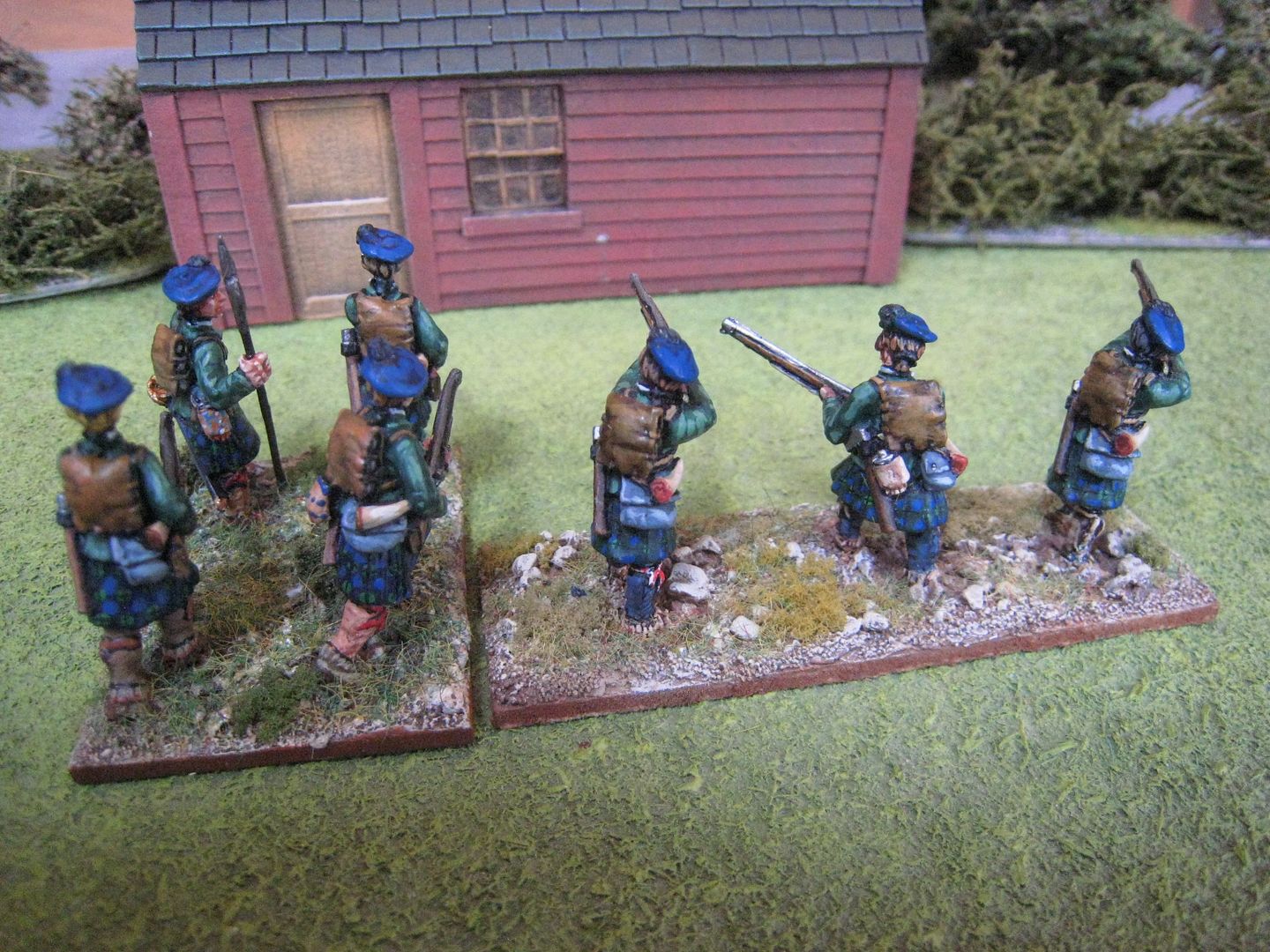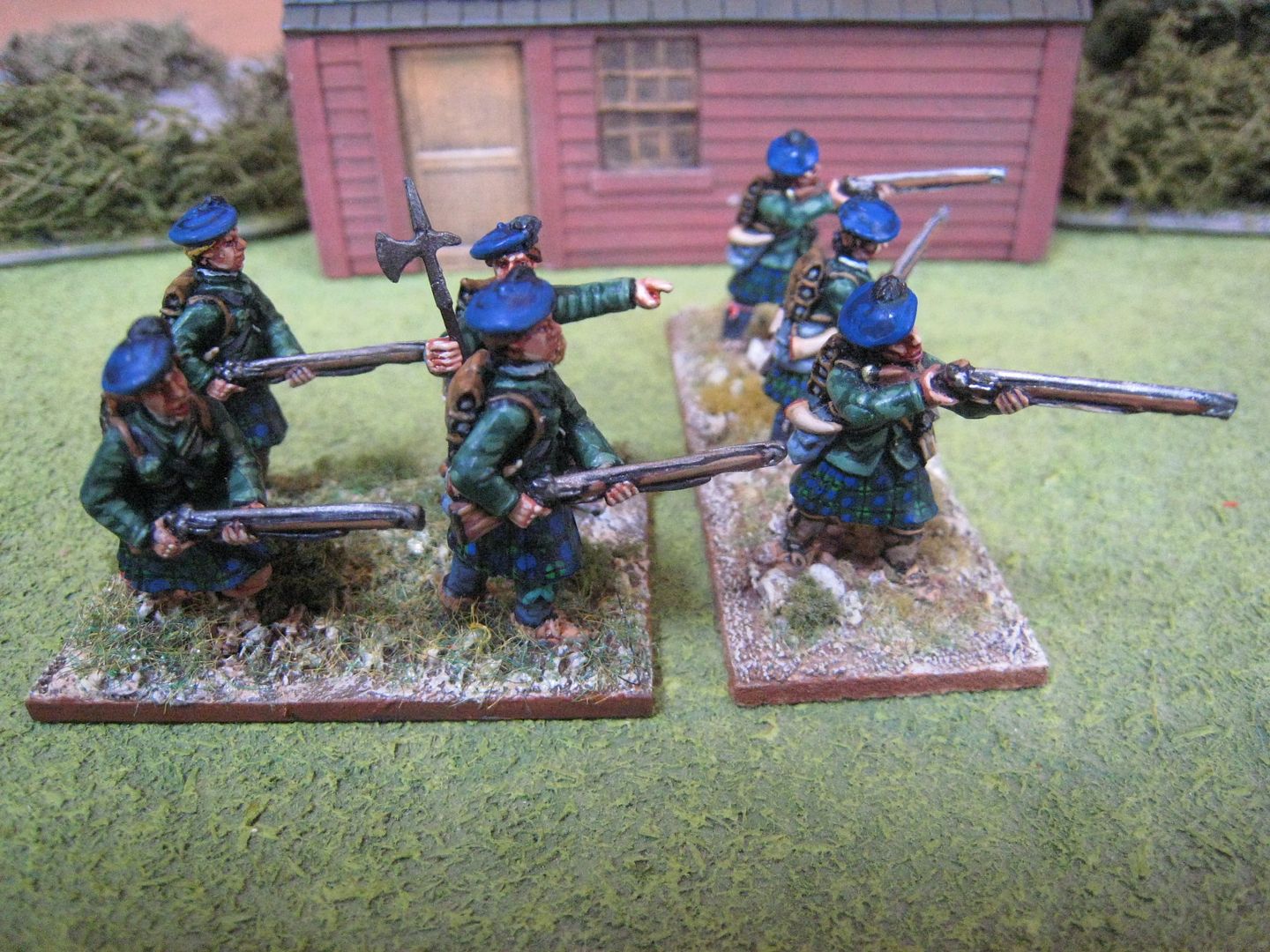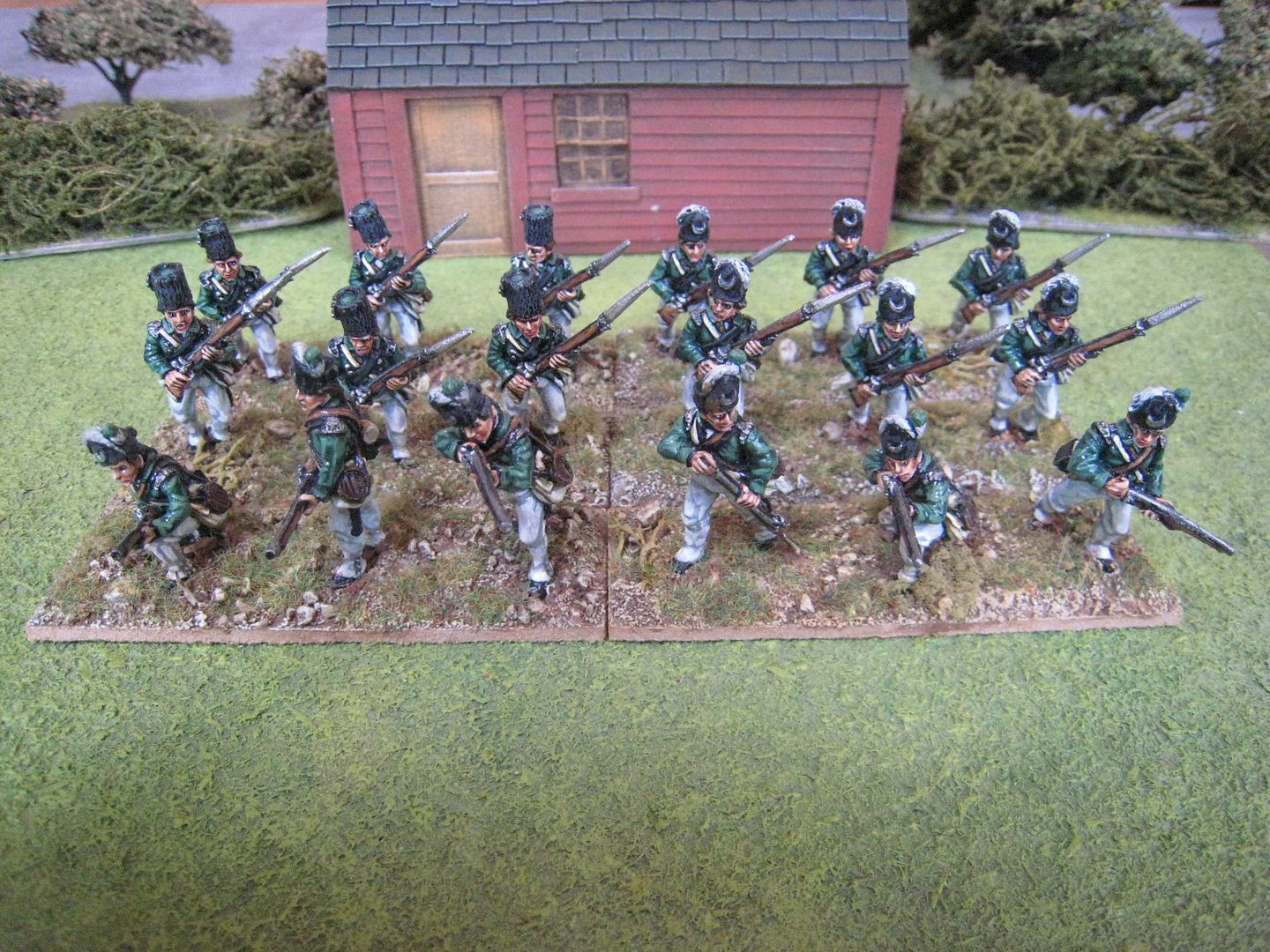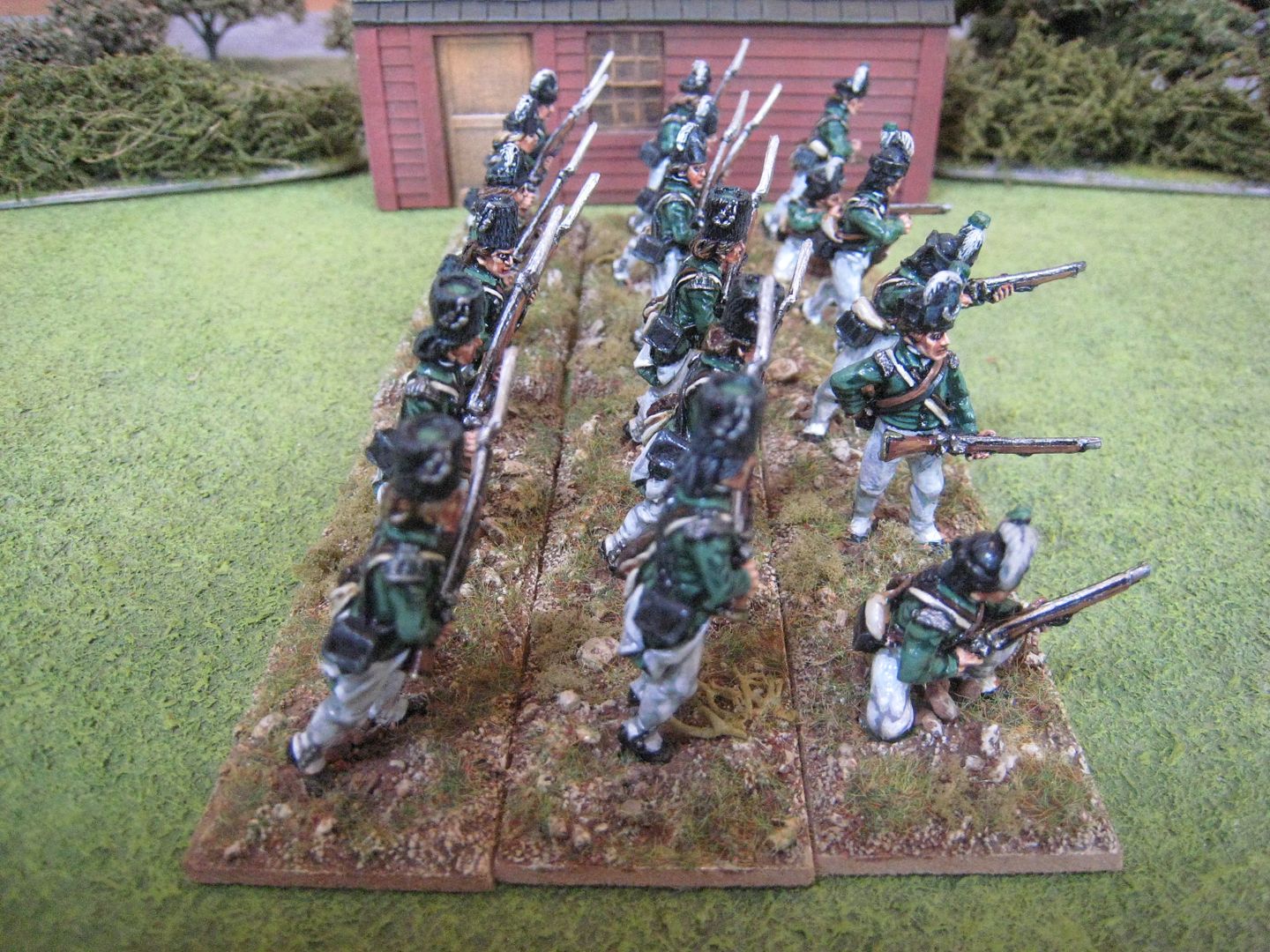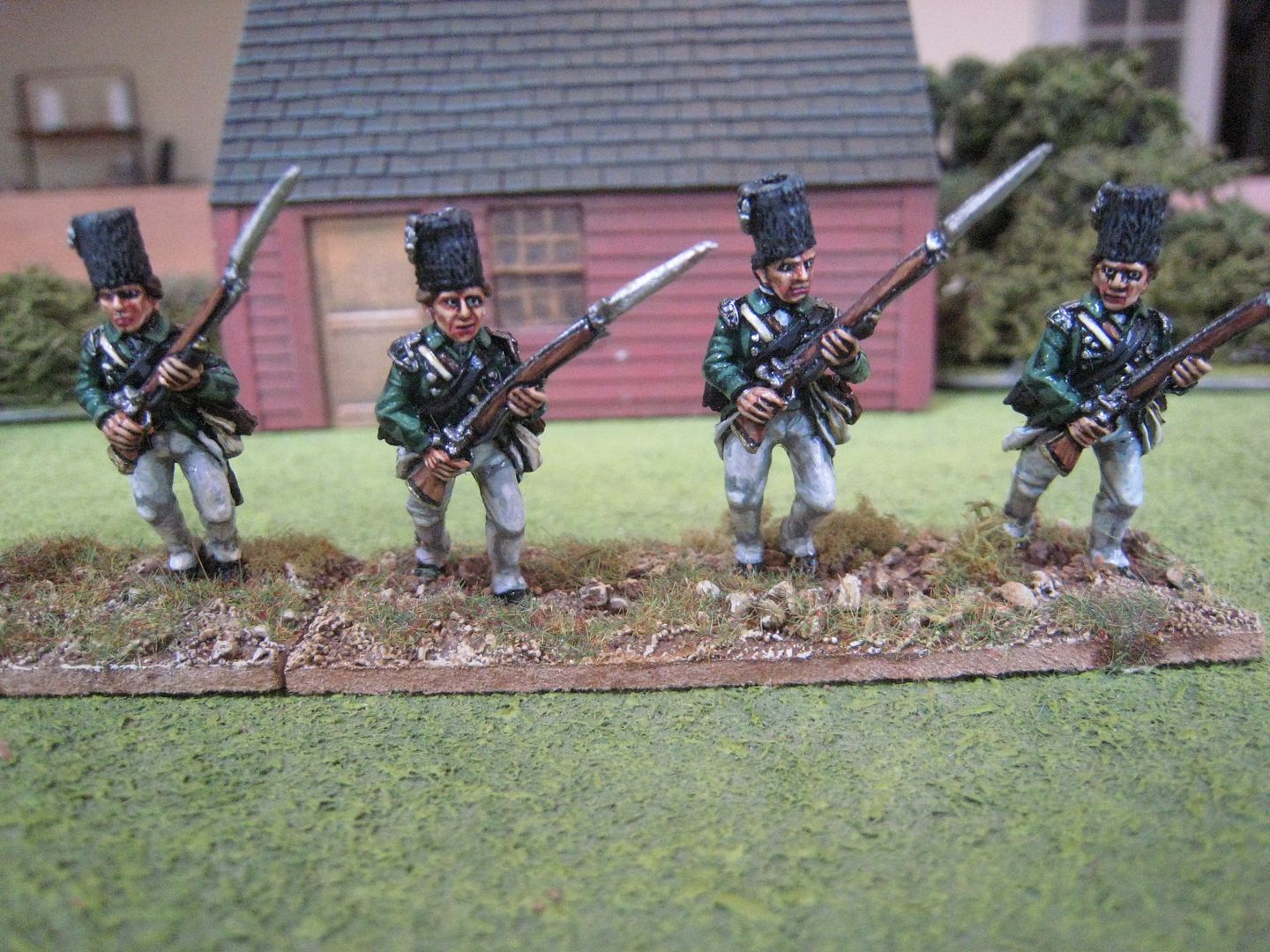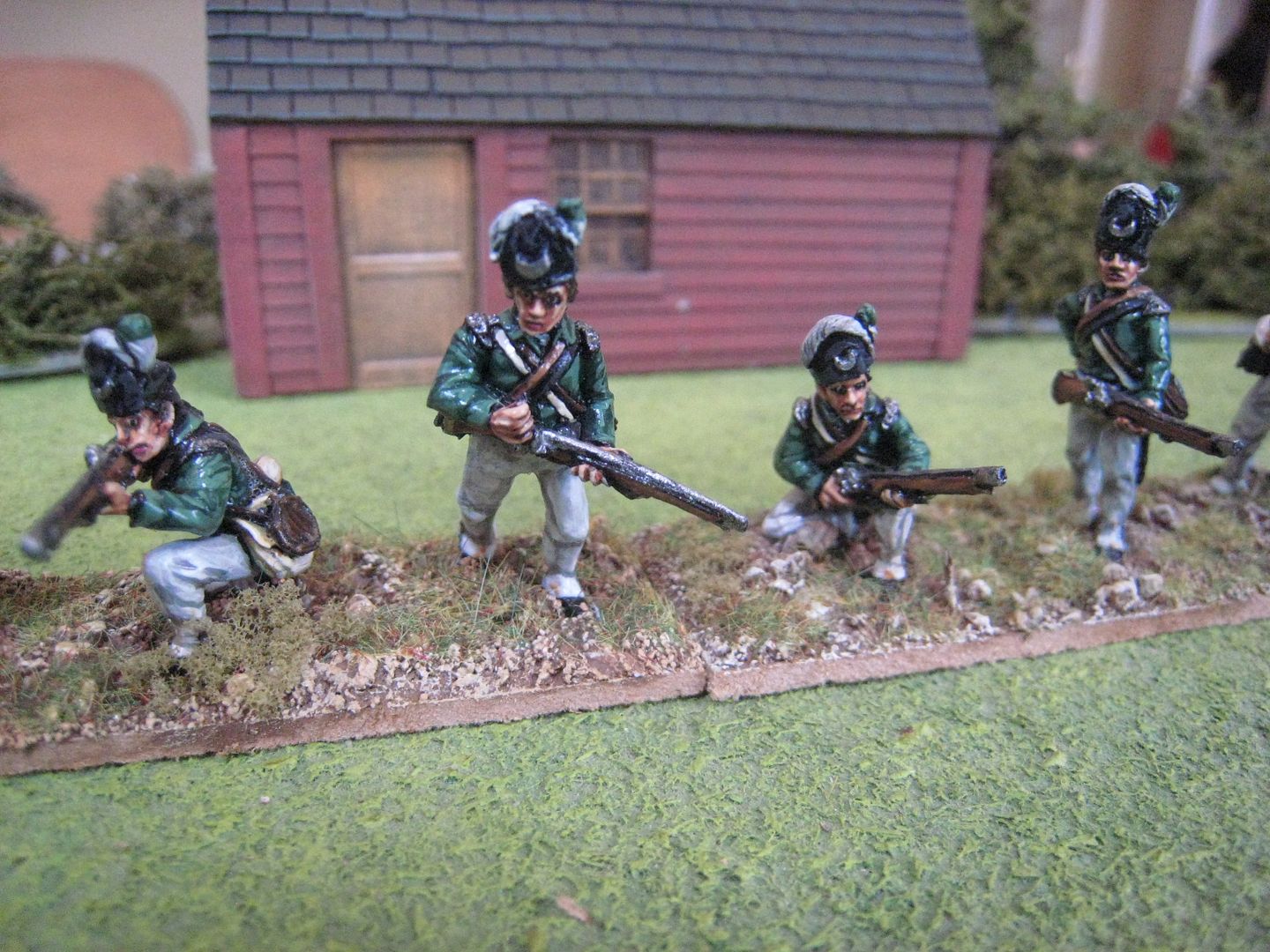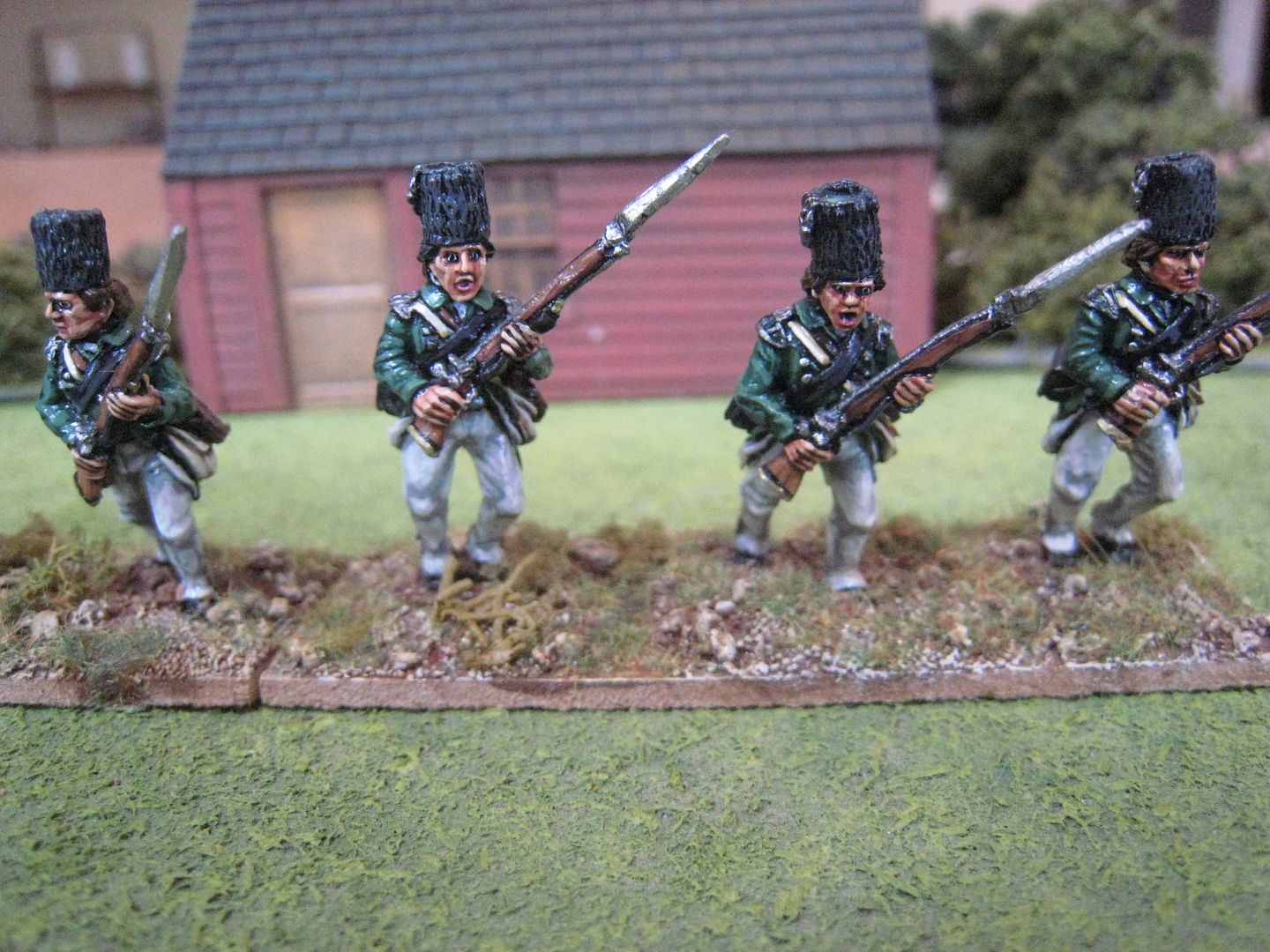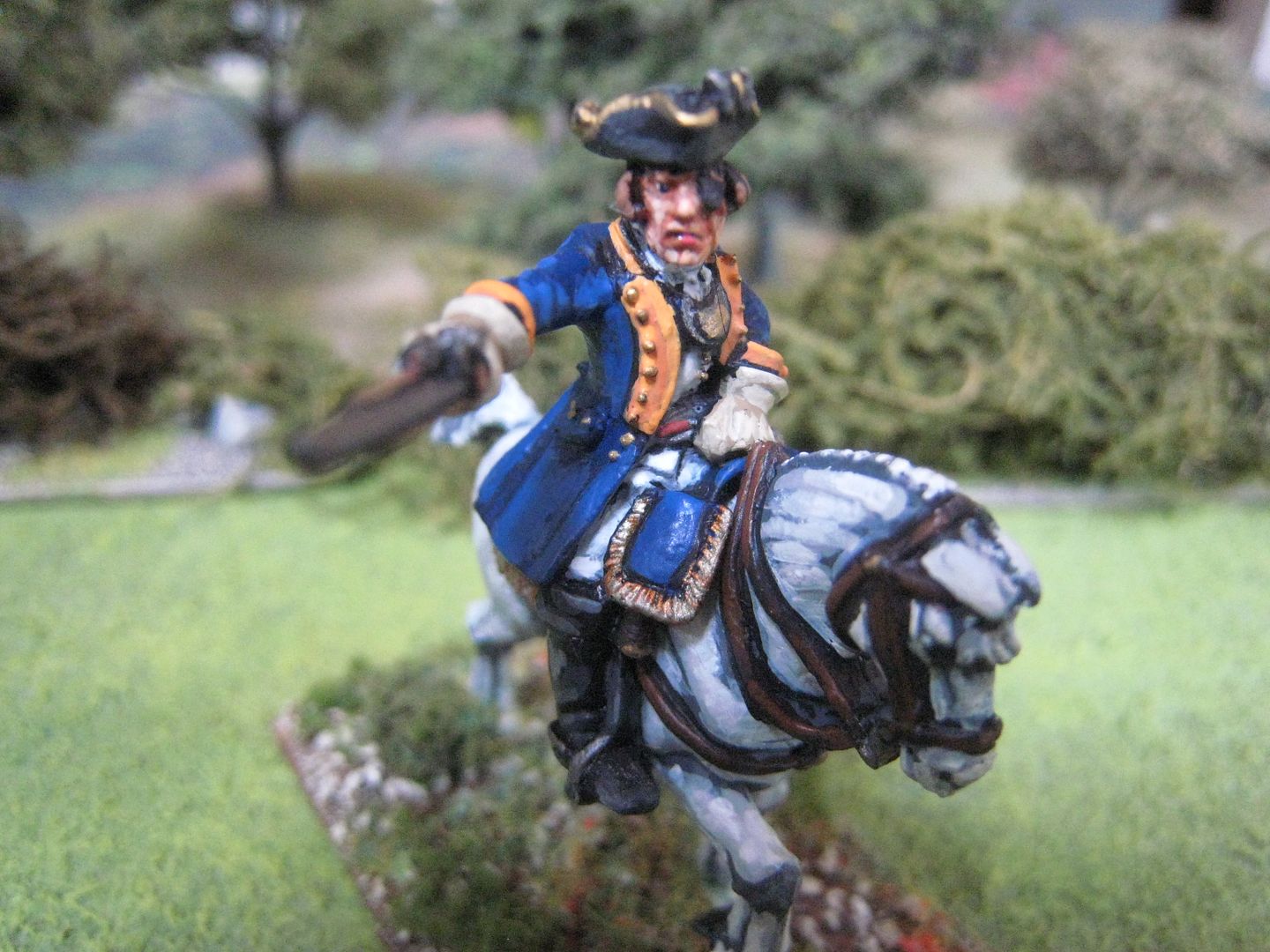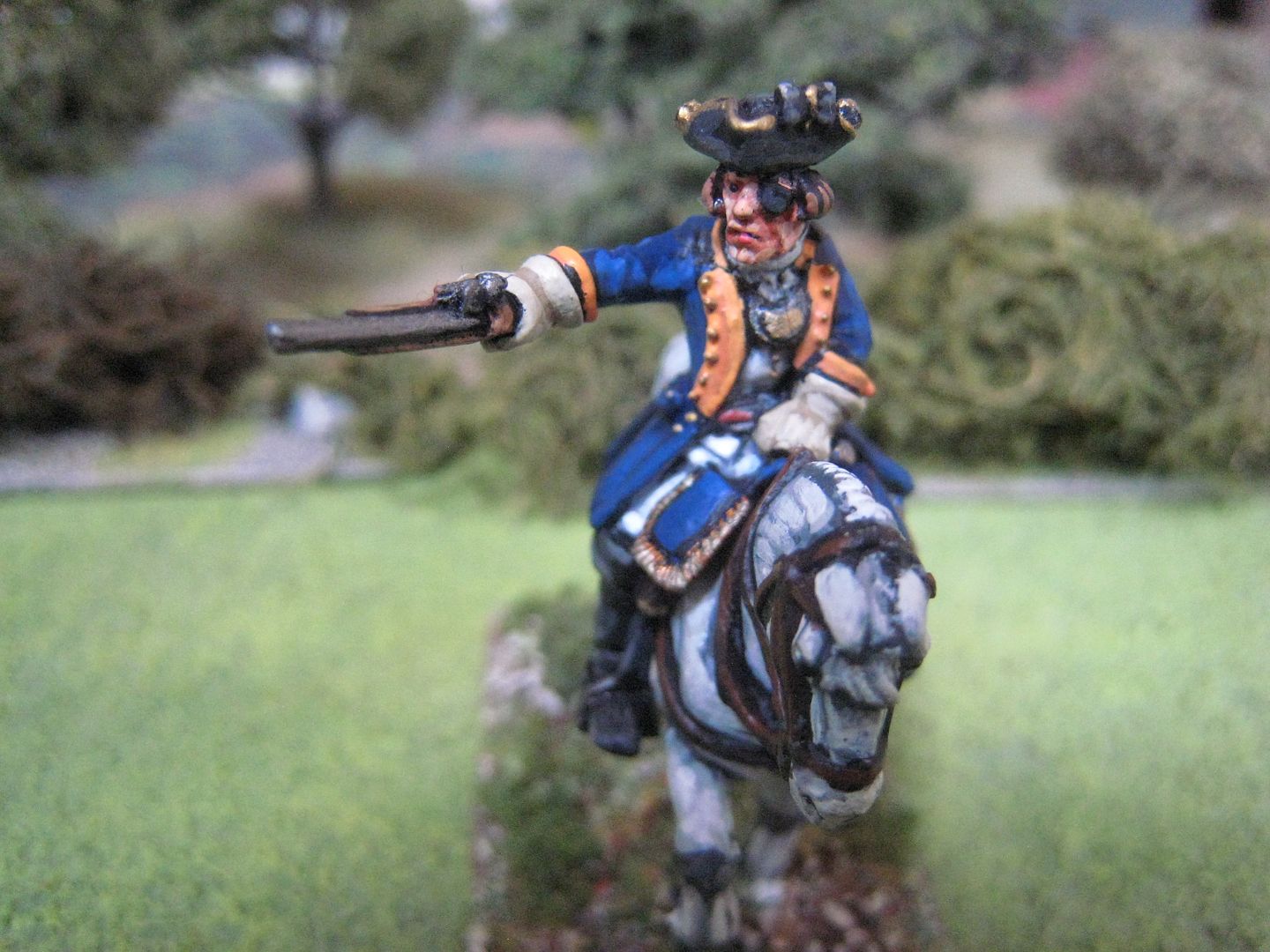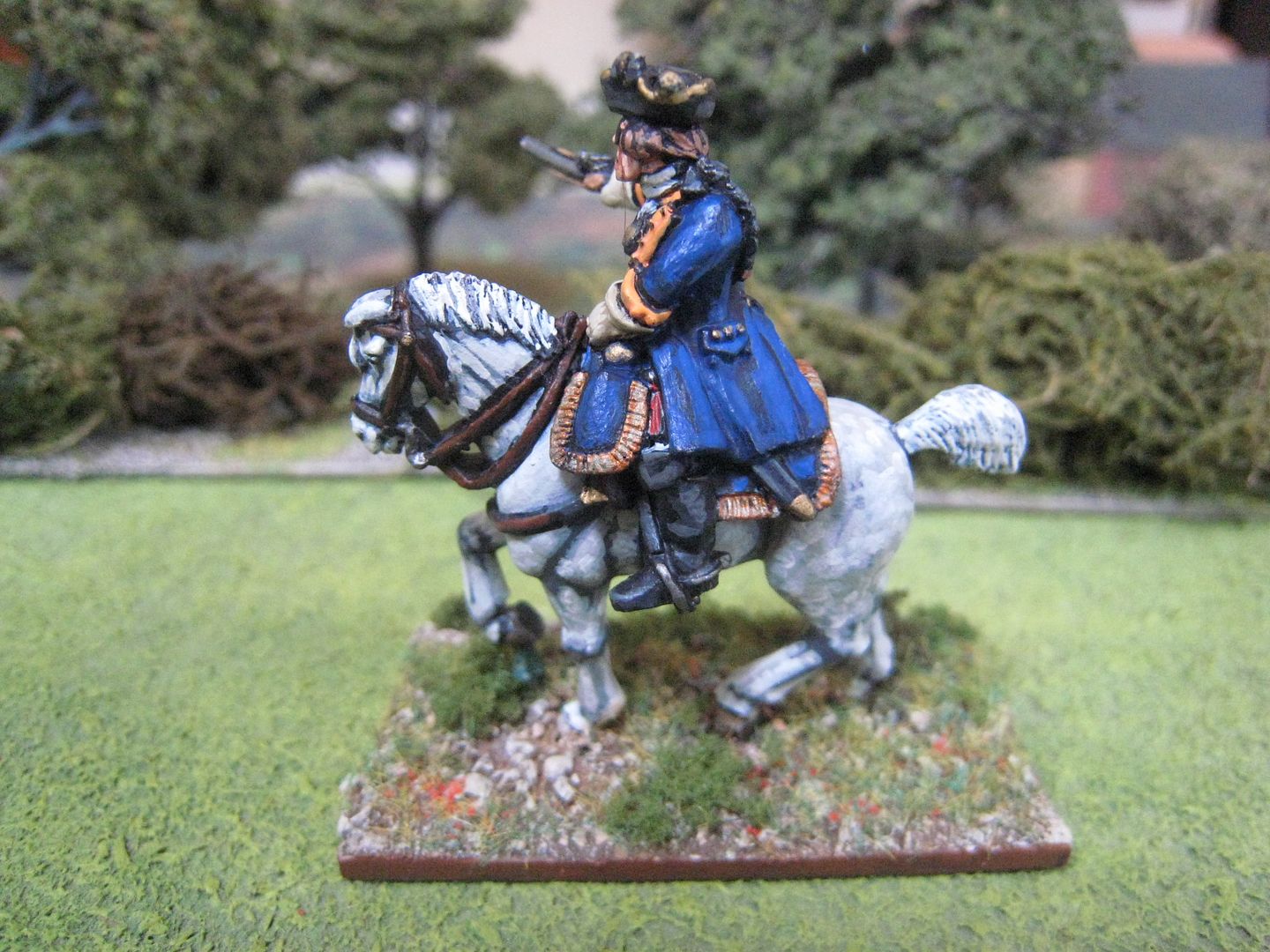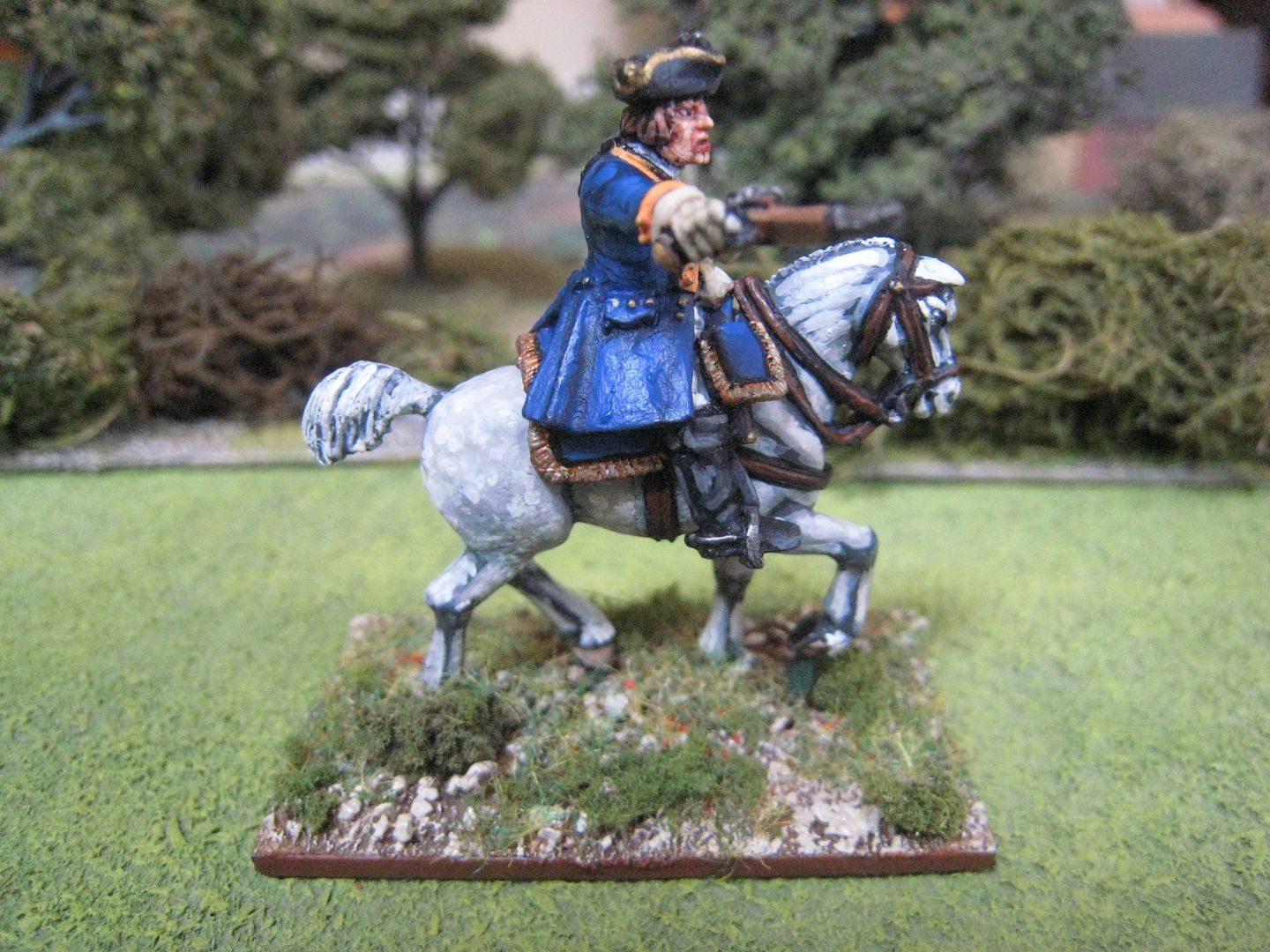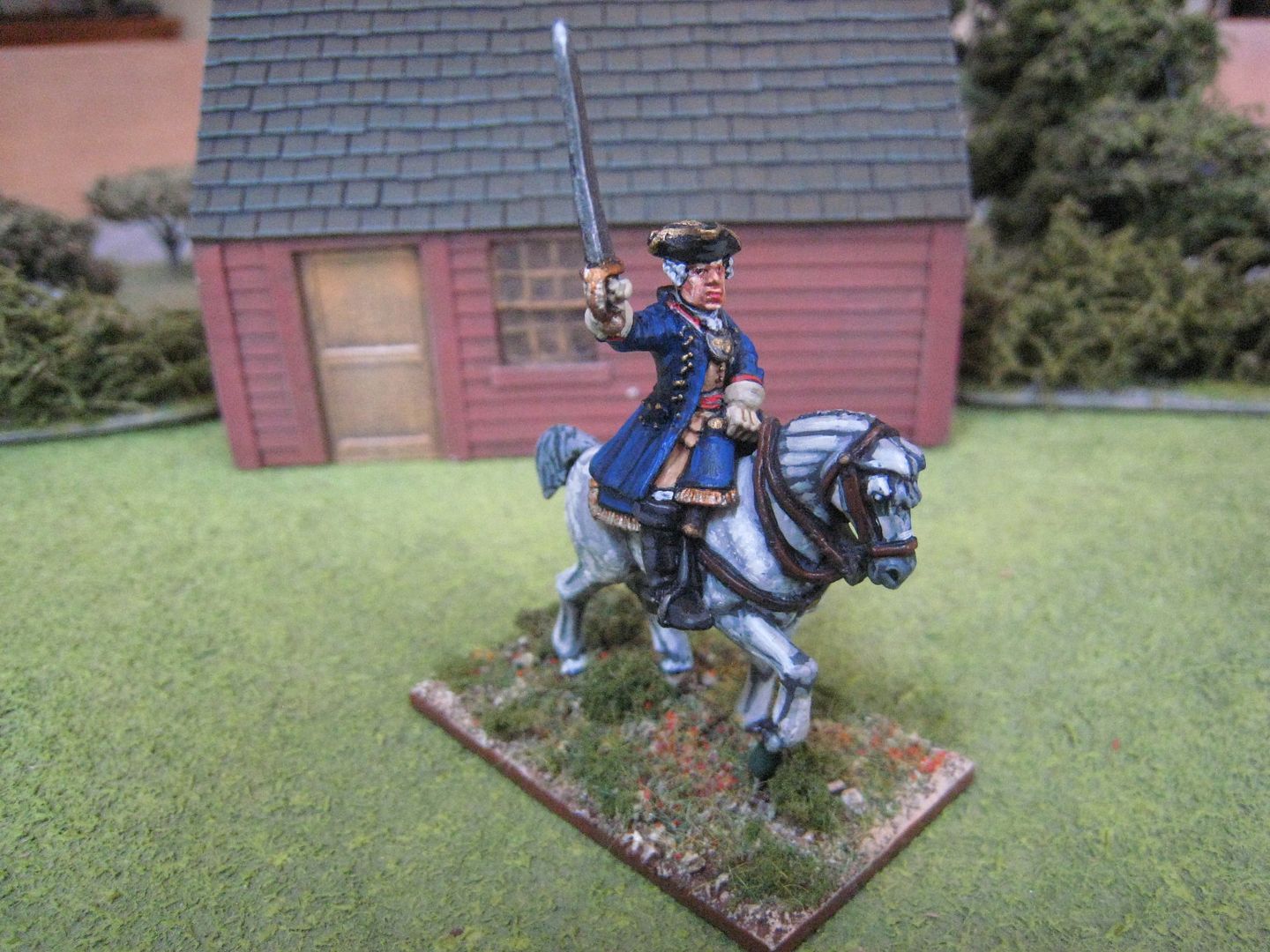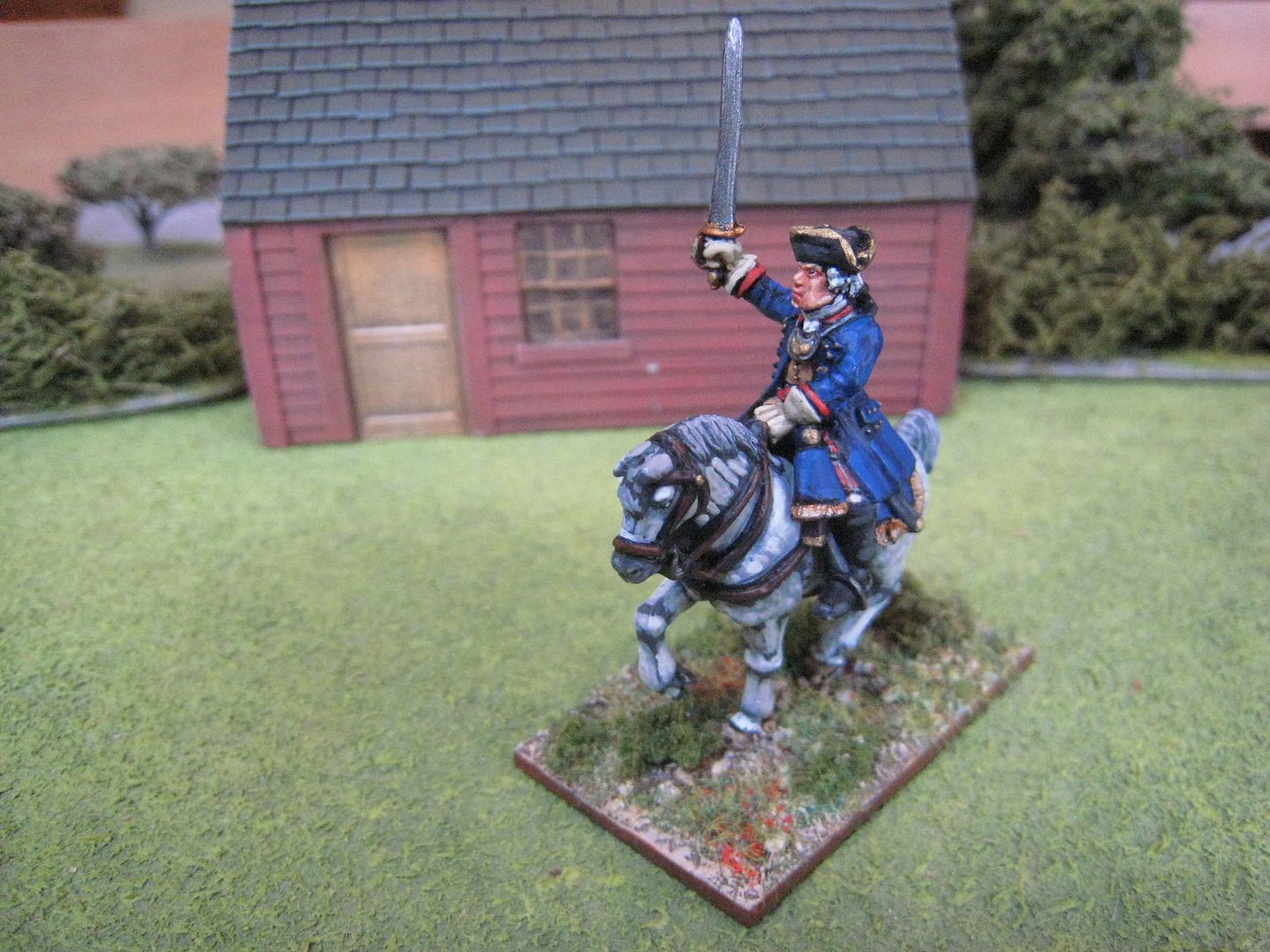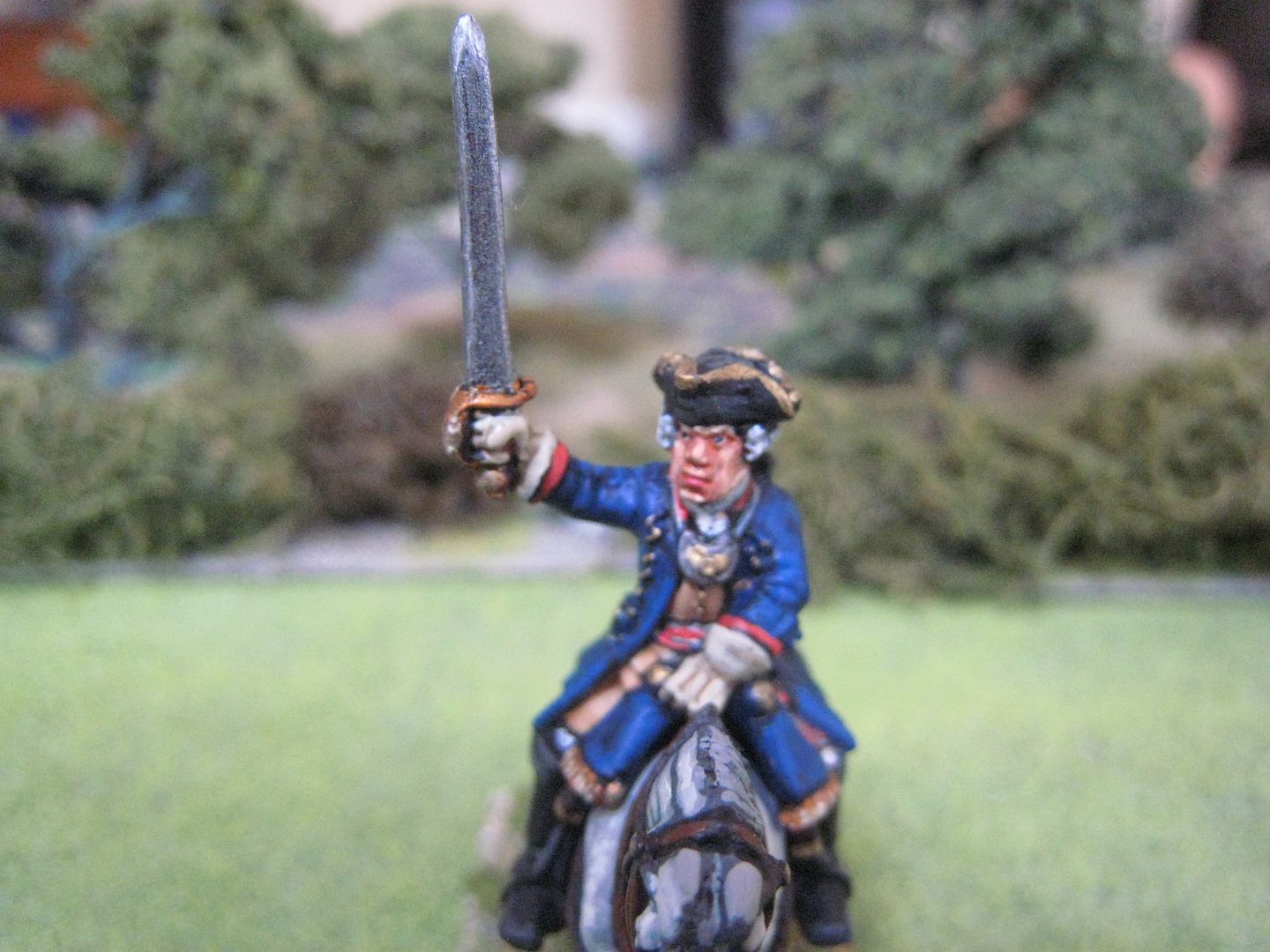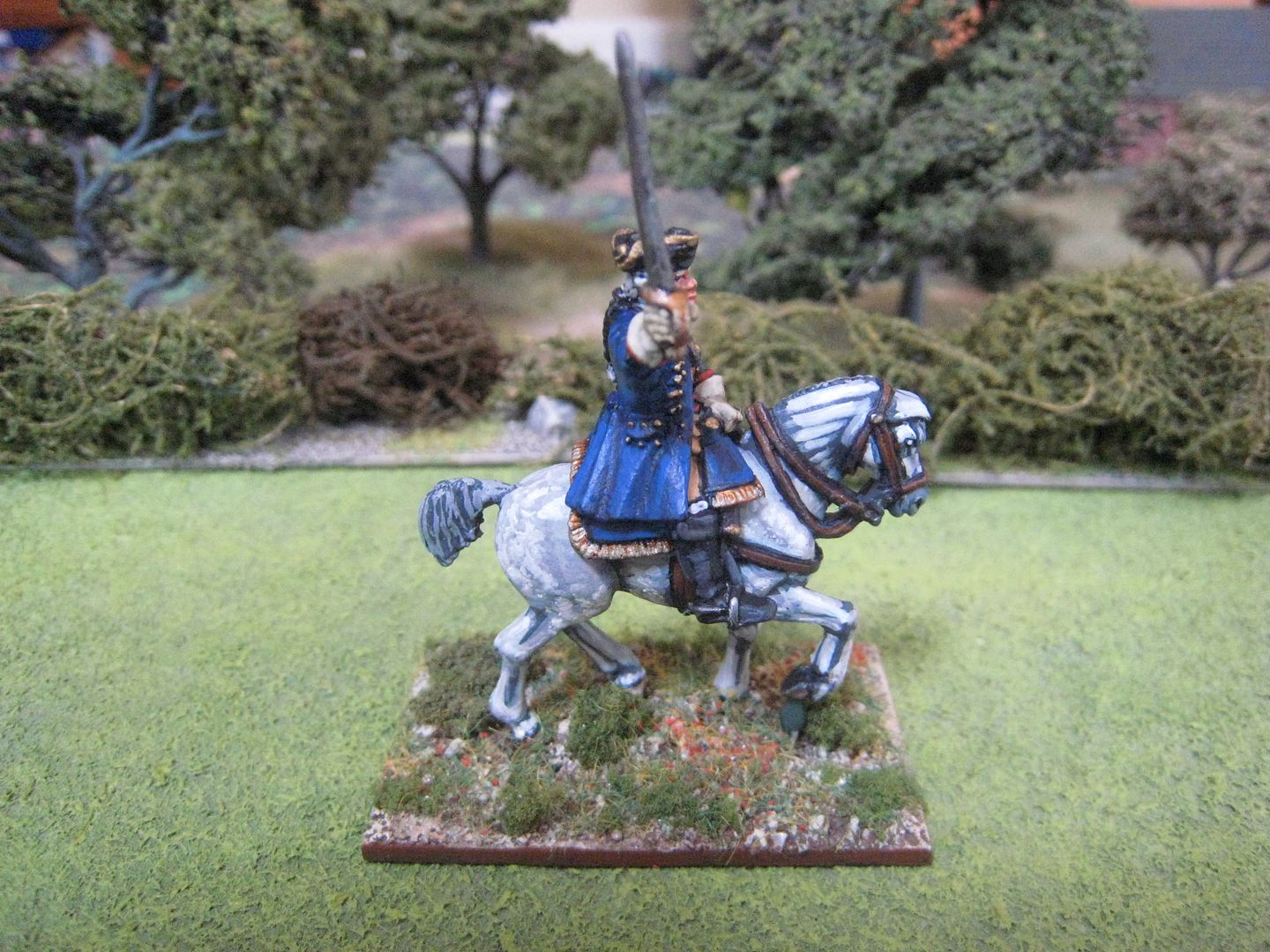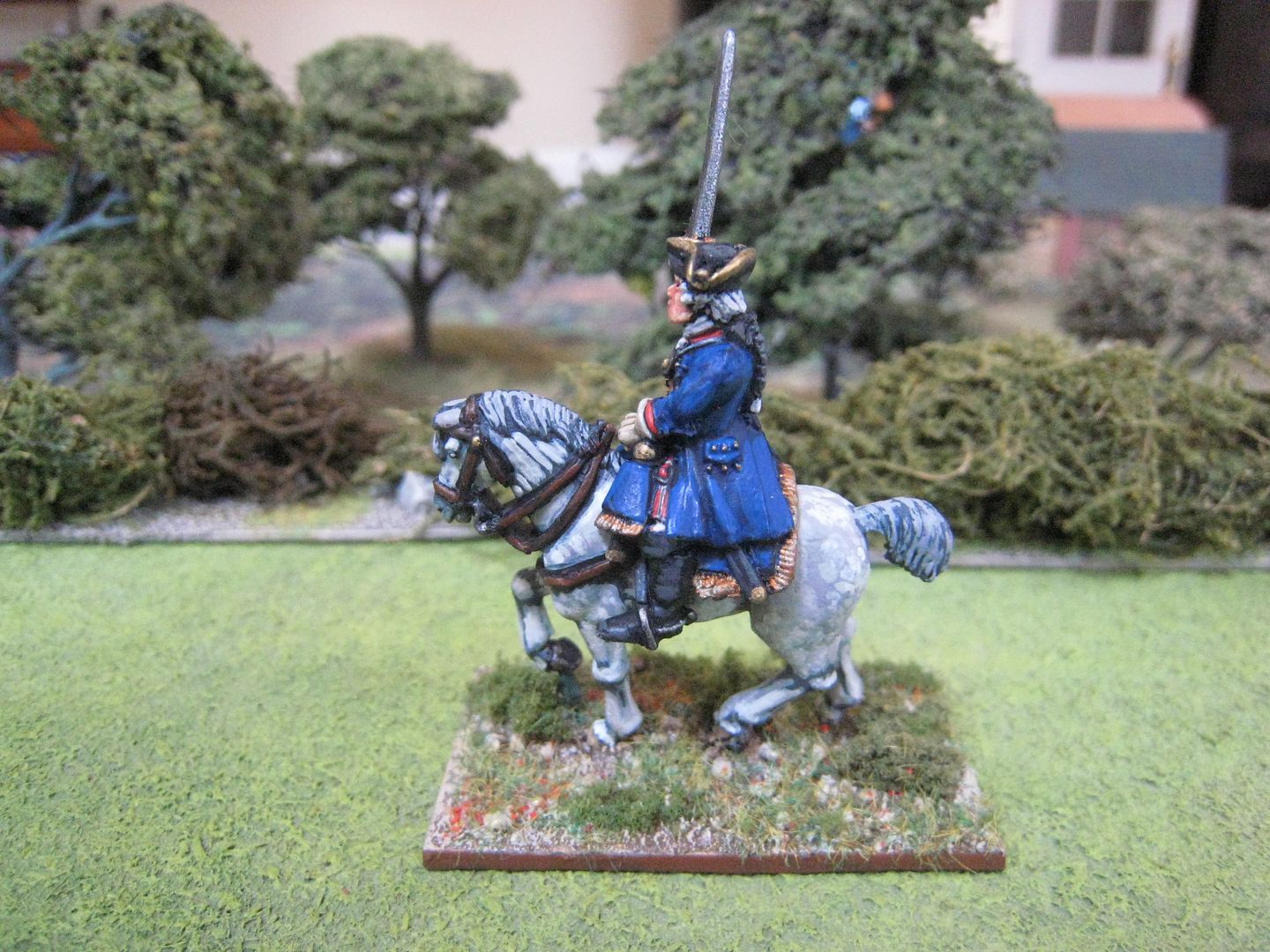After the past couple of weeks' posts, I thought it might be useful to circle back on Hessian command figures, and what one might want or need for an AWI collection. There is no need, of course, to paint up separate figures for each of the personalities - I've done this simply because I enjoy exploring the lives of these characters and representing them on the tabletop. The Caliver/"British Grenadier!" scenario books rarely require more than 2-3 Hessian command figures in any one scenario (see below); so that's all you really need. It's perhaps rather obsessive to paint up 10 separate personality figures (12 if you count the Brunswickers as well).
But let's just remind ourselves how the Hessian corps was organised. The corps consisted of two divisions, the first commanded by Lieutenant-General von Heister and the second (which consisted largely of the garrison regiments) by Lieutenant-General von Knyphausen. (Both commanders were in their sixties, which they used to extract from the Landgrave extra pay and pensions for their families, should they not return from America.) Once in America, von Heister had overall command of the Hessian corps until he was replaced by his subordinate, von Knyphausen, after the disaster at Trenton. Knyphausen handed over command to Lieutenant-General von Lossberg in 1782. The grenadier battalions were brigaded together under the command of Colonel von Donop until he was killed in October 1777, at which point the grenadier brigade was commanded by Colonel, then Major-General, Kospoth. Major Generals von Mirbach and Stirn also served as brigade commanders, with other officers doing the same as necessary (e.g. Rall, effectively, at Trenton). One of the things that irritated Hessians commanders was the British habit of promoting officers above them with back-dated commissions - so, e.g. von Lossberg and Kospoth (and two others) were promoted to major-general rank in February 1779, and this prompted Clinton to promote seven British brigadiers to equivalent rank, with their commissions back-dated prior to those of the Hessians.
In terms of what the scenarios require, we have:
- Commanders-in-chief:
- von Heister (White Plains);
- von Knyphausen (Brandywine); and
- Rall (Trenton).
- Brigade Commanders:
- Brethauer (Trenton);
- von Donop (Long Island, Haarlem Heights, Brandywine, Bound Brook, Whitemarsh);
- Kospoth (Monmouth);
- von Linsing (Pell's Point);
- von Lossberg (Newport, Springfield);
- von Mirbach (Long Island);
- Rall (White Plains);
- von Riedesel (Saratoga battles);
- Scheffer (Trenton);
- Stirn (Long Island, Brandywine);
- von Westerhagen (Newport);
- von Wurmb (Springfield).
In other words, for Long Island you need 3 Hessian brigade commanders; for Trenton you need 2 brigade commanders and Rall as C-in-C; for Brandywine you need 2 brigade commanders; and for Newport you also need 2. So having 3 Hessian command figures will sort you out for most scenarios, and if you can live with differences in uniform facing colours etc, then 3 is all you need. Even if you can't live with such differences, it is possible to "double-up": for example, von Mirbach and von Lossberg were chiefs of the same regiment, and therefore probably wore the same uniform; von Westerhagen and von Riedesel both wore uniforms with yellow facings - the difference was in the weave in their sashes (red for Hesse-Kassel, yellow for Brunswick); a figure without lapels will do you for Rall and Kospoth. So one figure with yellow lapels, one with red lapels, and a third with no lapels would serve pretty nicely. Personally, I think Carl von Donop is also worth doing, as he was a pivotal figure, appears in a number of scenarios and had a distinctive uniform; and a jaeger commander can then double up as Lieutenant-Colonel Ludwig Wurmb.
So those are my thoughts. Suitable figures are available from Perry, Foundry and Brigade Games, as noted in the individual posts. Size-wise, Foundry are the chunkiest and Brigade Games the slimmest, whilst the Eureka Miniatures figures are probably the tallest - a comparison pic is below. If I did this again would I do anything differently? Yes - I'd paint von Heister in his light blue dragoon uniform (as per the Osprey MAA); and I'd perhaps use the Brigade Games mounted jaeger officer for von Donop. I use the same blue paints that I use for the Continental Army - the Foundry "Deep Blue" 20 set, and it's maybe a bit "light" for the Hessians. But I'm pleased with these personality figures. The Hessians were good solders, and they are worth a bit of your time.
From left to right: Brigade Games, Eureka, Foundry
Some Old Glory American command are next!
